Winter 2011
Editor's Note
"There is no quantum world,” said Danish physicist Neils Bohr. “It is wrong to think that the task of physics is to find out how Nature is. Physics concerns what we can say about Nature.” [Emphases added] Despite this bothersome paradox, Bohr’s interpretation of quantum mechanics has been scientific orthodoxy for nearly a century. That’s quite long enough, according to physics professor Travis Norsen. In “An Embarrassment of Beables,” Travis challenges the “Copenhagen interpretation” of quantum mechanics and supports a less paradoxical theory first developed in 1926.
Challenging the dominant paradigm is a long-standing tradition in the sciences and indeed a familiar practice across all disciplines at Marlboro. In this issue of Potash Hill you will also learn about student Sari Brown’s efforts to confront social patterns of gender oppression in Bolivia, and alumna Daniella Martin’s crusade against species discrimination in the kitchen. Even Marlboro’s new ceramics professor, Martina Lantin, challenges trenchant dichotomies between art and craft, sculptural and functional, in her practice and in the classroom.
If you find something in this Potash Hill that challenges your own way of thinking, or have any other comments, please drop me a line. You can see reactions to the last issue on page 46.
—Philip Johansson, editor
Table of Contents
Summertime at Villa Roma
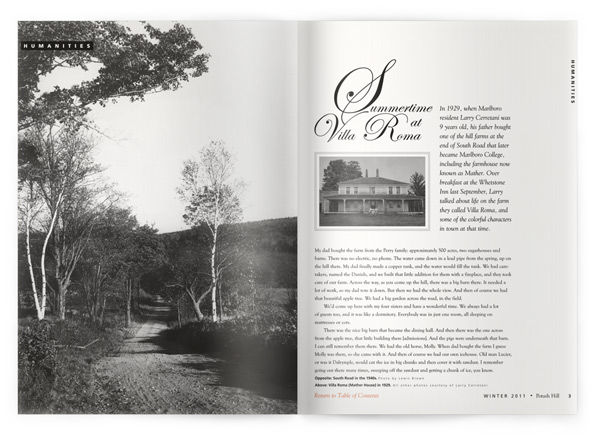
In 1929, when Marlboro resident Larry Cerretani was 9 years old, his father bought one of the hill farms at the end of South Road that later became Marlboro College, including the farmhouse now known as Mather. Over breakfast at the Whetstone Inn last September, Larry talked about life on the farm they called Villa Roma, and some of the colorful characters in town at that time.
My dad bought the farm from the Perry family: approximately 500 acres, two sugarhouses and barns. There was no electric, no phone. The water came down in a lead pipe from the spring, up on the hill there. My dad finally made a copper tank, and the water would fill the tank. We had caretakers, named the Daniels, and we built that little addition for them with a fireplace, and they took care of our farm. Across the way, as you come up the hill, there was a big barn there. It needed a lot of work, so my dad tore it down. But then we had the whole view. And then of course we had that beautiful apple tree. We had a big garden across the road, in the field.
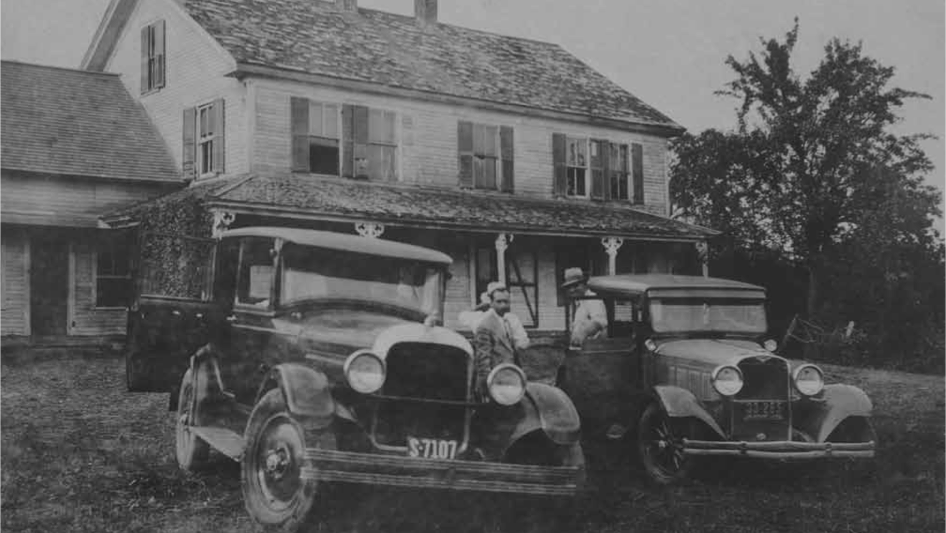
We'd come up here with my four sisters and have a wonderful time. We always had a lot of guests too, and it was like a dormitory. Everybody was in just one room, all sleeping on mattresses or cots.
There was the nice big barn that became the dining hall. And then there was the one across from the apple tree, that little building there [admissions]. And the pigs were underneath that barn. I can still remember them there. We had the old horse, Molly. When dad bought the farm I guess Molly was there, so she came with it. And then of course we had our own icehouse. Old man Lucier, or was it Dalrymple, would cut the ice in big chunks and then cover it with sawdust. I remember going out there many times, sweeping off the sawdust and getting a chunk of ice, you know.
It was a beautiful field all the way down to the woods. We used to walk that way, go down and follow the brook, go way down to Harrisville [at the bottom of Moss Hollow Road], and then come back on the road. My dad would always have company up there, and we'd do that walk every so often. Some of the people we took there were, you know, they never did much walking. It would take us a few hours.
![]()
Henry Hughes had the adjoining farm, and his wife was a schoolteacher. Taught in the little schoolhouse next to Russell Hertzburg's [now President Ellen McCulloch-Lovell's house]. She was a big, strapping woman, and she was barefoot all the time. Went into the barn, all over the cow droppings and everything. Didn't bother her one bit. We'd get milk from them. Nice fresh milk. So we had a nice relationship with them. Henry did a lot for my dad. I can still see him out there with his scythe, cutting down hay in the field and giving it to the horses and cows.
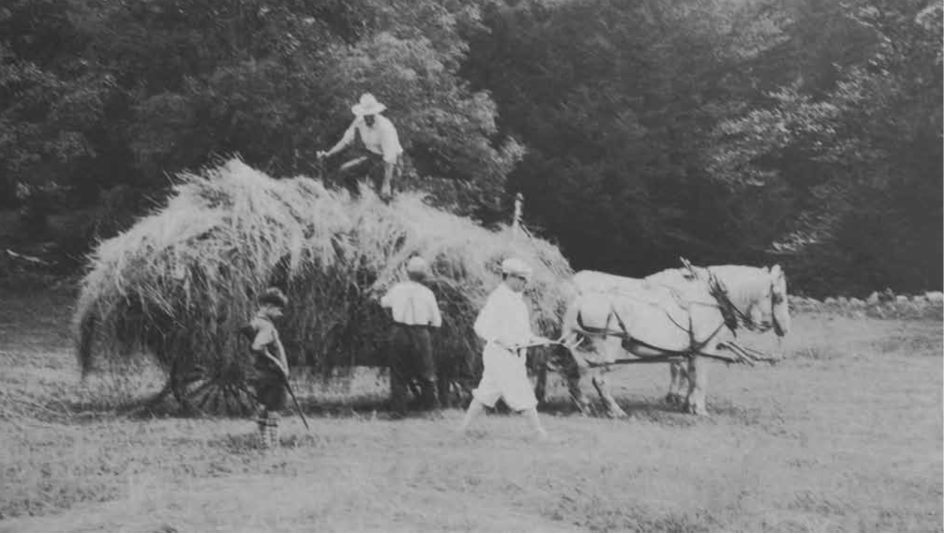
Down the road was Reverend Christie. Just down the bottom of the hill. From there, you came up the road to the Hertzburgs. Mr. Hertzburg would walk up the hill and sit on the porch with my dad, and they would have a wonderful time talking about different things. He was a painter; he had a paint store in Brattleboro.
Then Lucier Road had Mr. and Mrs. Lucier and son Robert. Mr. Lucier was a violinist. Above them lived the Chase Brothers, Fred and Frank. They mowed our field for hay. Frank had just a little mustache, but Fred had a beard, and they were short people. At noon-time, Fred would sit down on the grass there, near that barn that's near the road, across from the apple tree, and have lunch: a can of beans, a hunk of cheese and bread. Oh boy, what a guy he was. We used to get over a hundred-some tons of hay, between the upper field and the lower field. I helped with the haying. And Mrs. Hughes, I can remember her on the horse and wagon. Helen would throw the hay up, and Henry would pack it down on the wagon. It was all loose. Always put it right in the barn there. It was quite a thing.
Up in back of the house, there were two sugarhouses. It was just beyond that-you know, all the woods up there-Helen Hughes always said there's an underground prison for the Indians. It was a cave-not a cave but a dungeon-like-went back to the 17- or 1800s maybe. Mrs. Hughes said it's somewhere up there, all built with stone, just a hole in the ground. It must still be there. I had an idea where the area was, but I could never find it.
![]()
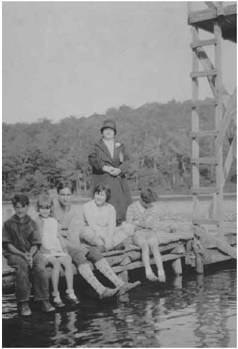
South Road was all dirt, and this wide. It was a bumpy and narrow road-and muddy, I'm telling you. If you met a car you had to find a spot to back up and pull over. The old road would get so muddy, my dad got stuck in the mud. My dad always had a big car, a big Cadillac I guess it was; he had just bought my mom a new Persian coat. And so we got stuck and we're pushing the car. My mom's pushing the car in her new coat. The car went ahead and my mom went down in the mud [laughs].
There was a little bridge right there before you make the turn at where Lucier Road takes off. It was all wood planks. And you'd go "buddaboom-buddaboom." When company was coming, we could hear the bridge, "buddaboom-buddaboom," up at the farm. After you crossed it, you'd stop and put the planks back, because they're all loose.
We'd come up for winter for snow and stuff, but not too much. I spent some winters up here. Mrs. Hughes had a Morgan horse named Jack, and she'd hitch him up on a sleigh and we'd come up the road. And in the summer she'd come in a wagon.
We used to go to South Pond, go through the woods there, behind. Bob Lucier took care of horses for summer people. He and I would ride over there-go through the woods-or go down to Harrisville through the woods and then come back Moss Hollow Road. We'd go down to that little store down there and get Mule's Head Beer. And we'd come back on the road, because it would be dark. It was bumpy and, I'll tell you, full of ledge and rock. They've fixed it up beautifully now.
![]()
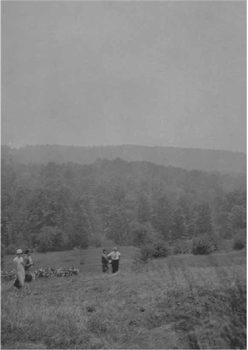
Walter Hendricks came into the picture in the late '30s. He came in from Chicago with his whole family. It took about four days to drive out here. The kids were all small. I forget how many children he had, four or five kids. And they were all little tots. A lovely family, and Walter was quite a guy. They bought Henry Hughes' place next door, then bought our farm from my dad.
I went into the service in '42, until '45. When I came out, Hendricks talked to my dad about selling the farm for the college. And that had to be '46 or '47. Hendricks would go down to New York to get money from different organizations. And he'd stop by to see my dad and visit. And of course, my dad was always writing a nice little check for him. He did that two or three times, I remember. From what I remember, when we sold I think the price was around $12,000. But my dad donated some money to the college too, because he was that type of person. My dad thought the idea of the college was a wonderful thing; that's why he did that.
Joining Larry at breakfast was innkeeper Jean Boardman, local resident Gussie Bartlett (wife of Bob Bartlett '52), alumni director Mark Genszler '95, sophomore film student Jesse Nesser, Potash Hill editor Philip Johansson, and alumni Bruce and Barbara Cole '59, who helped organize the event.
An Embarrassment of Beables
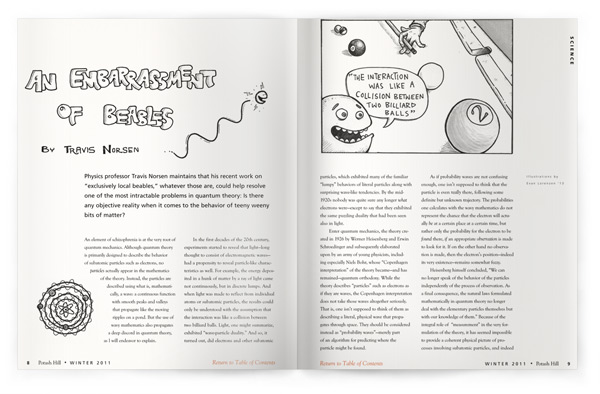
Physics professor Travis Norsen maintains that his recent work on “exclusively local beables,” whatever those are, could help resolve one of the most intractable problems in quantum theory: Is there any objective reality when it comes to the behavior of teeny weeny bits of matter?
An element of schizophrenia is at the very root of quantum mechanics. Although quantum theory is primarily designed to describe the behavior of subatomic particles such as electrons, no particles actually appear in the mathematics of the theory. Instead, the particles are described using what is, mathematically, a wave: a continuous function with smooth peaks and valleys that propagate like the moving ripples on a pond. But the use of wavy mathematics also propagates a deep discord in quantum theory, as I will endeavor to explain.
In the first decades of the 20th century, experiments started to reveal that light—long thought to consist of electromagnetic waves—had a propensity to reveal particle-like characteristics as well. For example, the energy deposited in a hunk of matter by a ray of light came not continuously, but in discrete lumps. And when light was made to reflect from individual atoms or subatomic particles, the results could only be understood with the assumption that the interaction was like a collision between two billiard balls. Light, one might summarize, exhibited “wave-particle duality.” And so, it turned out, did electrons and other subatomic particles, which exhibited many of the familiar “lumpy” behaviors of literal particles along with surprising wave-like tendencies. By the mid-1920s nobody was quite sure any longer what electrons were—except to say that they exhibited the same puzzling duality that had been seen also in light.
Enter quantum mechanics, the theory created in 1926 by Werner Heisenberg and Erwin Schroedinger and subsequently elaborated upon by an army of young physicists, including especially Niels Bohr, whose “Copenhagen interpretation” of the theory became—and has remained—quantum orthodoxy. While the theory describes “particles” such as electrons as if they are waves, the Copenhagen interpretation does not take those waves altogether seriously. That is, one isn’t supposed to think of them as describing a literal, physical wave that propagates through space. They should be considered instead as “probability waves”—merely part of an algorithm for predicting where the particle might be found.
 As if probability waves are not confusing enough, one isn’t supposed to think that the particle is even really there, following some definite but unknown trajectory. The probabilities one calculates with the wavy mathematics do not represent the chance that the electron will actually be at a certain place at a certain time, but rather only the probability for the electron to be found there, if an appropriate observation is made to look for it. If on the other hand no observation is made, then the electron’s position—indeed its very existence—remains somewhat fuzzy.
As if probability waves are not confusing enough, one isn’t supposed to think that the particle is even really there, following some definite but unknown trajectory. The probabilities one calculates with the wavy mathematics do not represent the chance that the electron will actually be at a certain place at a certain time, but rather only the probability for the electron to be found there, if an appropriate observation is made to look for it. If on the other hand no observation is made, then the electron’s position—indeed its very existence—remains somewhat fuzzy.
Heisenberg himself concluded, “We can no longer speak of the behavior of the particles independently of the process of observation. As a final consequence, the natural laws formulated mathematically in quantum theory no longer deal with the elementary particles themselves but with our knowledge of them.” Because of the integral role of “measurement” in the very formulation of the theory, it has seemed impossible to provide a coherent physical picture of processes involving subatomic particles, and indeed questionable whether there is even any such realm of microscopic objective reality.
There exists an alternative theory of quantum phenomena, however, which has none of the measurement problems of the Copenhagen theory but makes precisely the same experimental predictions. Indeed, this alternative invites just the opposite kinds of philosophical extrapolations: Particles are really particles (whether anybody is looking at them or not), no special role is played by observation or measurement, and God (much to Einstein’s delight) does not play dice. The theory was first put forward by Louis de Broglie, also in 1926, but he was talked out of it by supporters of the Copenhagen view. It was independently rediscovered in 1952 by David Bohm and found its greatest champion in the physicist John Stewart Bell, starting in the 1960s.
Bell wrote: “Bohm’s 1952 papers on quantum mechanics were for me a revelation. [They eliminated] any need for a vague division of the world into ‘system’ on the one hand, and ‘apparatus’ or ‘observer’ on the other.” The need for such a “vague division” was, of course, just the point on which all orthodox quantum philosophy rested. But from Bell’s point of view, the contrast provided by the de Broglie-Bohm theory brought to light how unnecessary—indeed, how silly and unscientific—it was to posit a division between “measurement” and “non-measurement” as part of an allegedly fundamental physical theory.
 For example, consider how the orthodox theory treats a simple situation such as the infamous double-slit experiment: A particle is fired toward a screen with two parallel slits in it, behind which lies a detection screen such as the CCD array in your digital camera. The Copenhagen mathematics says that the particle propagates along as a wave, splitting in half and going through both of the two slits. But then the CCD array measures the particle itself, causing the wave to collapse, rather like a balloon pricked with a pin that suddenly deflates down to a single point. The very mathematical formulation of Copenhagen quantum mechanics involves a fundamental distinction between physical processes that are measurements and those that aren’t, producing the infamous quantum jumps.
For example, consider how the orthodox theory treats a simple situation such as the infamous double-slit experiment: A particle is fired toward a screen with two parallel slits in it, behind which lies a detection screen such as the CCD array in your digital camera. The Copenhagen mathematics says that the particle propagates along as a wave, splitting in half and going through both of the two slits. But then the CCD array measures the particle itself, causing the wave to collapse, rather like a balloon pricked with a pin that suddenly deflates down to a single point. The very mathematical formulation of Copenhagen quantum mechanics involves a fundamental distinction between physical processes that are measurements and those that aren’t, producing the infamous quantum jumps.
Bell’s point, in effect, was this: What the heck is a “measurement?” This just isn’t the kind of concept one expects to show up in the fundamental laws of microphysics, because it is anthropocentric: “Making measurements” is something people do, not something electrons or the laws governing their behavior ought to know or care about. Bell asked, with tongue in the vicinity of cheek: “What exactly qualifies some physical systems to play the role of ‘measurer’? Was the wave function of the world waiting to jump for thousands of millions of years until a single-celled living creature appeared? Or did it have to wait a little longer, for some better qualified system . . . with a Ph.D.?”
If one can have quantum physics (including its amazing predictive and indeed practical powers) without the fuzzy quantum philosophy, why haven’t more physicists adopted the alternative viewpoint? One possible source of discomfort is known as a “beable” (a term Bell coined that rhymes with “agreeable,” not “feeble”), which brings us finally to some recent work I’ve done. In deliberate contrast to the “observables,” which play an absurdly central role in the formalism of standard quantum mechanics, beables are all those elements in a theory that are supposed to be taken seriously—as corresponding to things that really exist physically, whether anyone is observing them or not.
Bell argued that in the Copenhagen quantum theory, it’s just not clear what the beables are, i.e., which elements in the theory (if any) are supposed to correspond to physically real things. The wave function, for example, is kept in deliberate limbo between the physical and the mental: It’s a mere “probability wave” (whatever that means). In the de Broglie-Bohm theory, by contrast, the ontological status of things is clear: The beables of the theory include both the particles and the guiding wave field. Both of these can and indeed must be thought of as referring to physical objects that exist and interact in the same way all the time, regardless of whether any observations or measurements are happening. It’s just an ordinary physics theory of the sort that any sensible person would have expected prior to being exposed to the Copenhagen philosophy.
But still there’s a puzzle. The particles in the de Broglie-Bohm theory are what Bell called “local beables.” This means that they exist and move around in ordinary, three-dimensional physical space. But the wave field that guides them—that is, the usual quantum mechanical wave function obeying Schroedinger’s equation—is by contrast a “non-local beable.” This means it exists not in ordinary, three-dimensional physical space, but . . . somewhere else. Mathematically, the wave is a function not just of the three spatial dimensions (x, y and z, say) but rather of the coordinates of all the particles simultaneously: The x coordinate of particle 1, the y coordinate of particle 1, the z coordinate of particle 1, the x coordinate of particle 2, and so on. For a Bohmian universe containing N particles, then, the wave function exists in a space of not three but 3N dimensions.
The “out of this world” character of the wave function has been an embarrassment for people wanting to take the wave function as a beable since the very beginning of quantum mechanics. For example, in the months after Schroedinger first proposed his eponymous equation in 1926, Einstein was contemplating the possibility that the role of the wave function might be to steer individual particles, as in the mature de Broglie-Bohm theory. He rejected this possibility, however, on the grounds that one simply couldn’t take seriously the idea of a physically real wave living in this abstract, high-dimensional space: “Schroedinger is, in the beginning, very captivating. But the waves in n-dimensional coordinate space are indigestible . . . ”
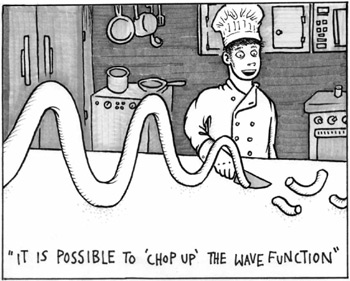 Later, in the 1960s, after Bohm had rediscovered and developed the pilot-wave picture and was lobbying for it as an alternative to the Copenhagen theory, Heisenberg criticized it on these same grounds. And this, more or less, is how things have stood since. Most physicists have remained simply unaware of the existence of the de Broglie-Bohm alternative to Copenhagen quantum physics, and most of those who are aware of it have dismissed it on erroneous grounds—that it conflicts with relativity theory (actually a problem with all current theories of quantum mechanics). A very small minority of physicists, however, has perceived the theory’s great virtues and has thus developed and championed it, learning to live, as it were, with the embarrassment of needing to accept the wave function as a non-local beable.
Later, in the 1960s, after Bohm had rediscovered and developed the pilot-wave picture and was lobbying for it as an alternative to the Copenhagen theory, Heisenberg criticized it on these same grounds. And this, more or less, is how things have stood since. Most physicists have remained simply unaware of the existence of the de Broglie-Bohm alternative to Copenhagen quantum physics, and most of those who are aware of it have dismissed it on erroneous grounds—that it conflicts with relativity theory (actually a problem with all current theories of quantum mechanics). A very small minority of physicists, however, has perceived the theory’s great virtues and has thus developed and championed it, learning to live, as it were, with the embarrassment of needing to accept the wave function as a non-local beable.
Not one to tolerate embarrassment, I began to meditate on this problem some years ago, and eventually made a small but perhaps important breakthrough. By means of what can only be described as a mathematical trick (which, for students who have taken calculus, amounts to the use of Taylor expansions), it is possible to “chop up” the wave function (on the 3N-dimensional space) into a number of distinct functions that live in ordinary three-dimensional space. That is, it is possible to mathematically rewrite the de Broglie-Bohm theory with a number of local beables—namely, waves propagating in physical space—in place of the non-local beable of the traditional formulation.
That was the good news. The bad news was that the number of distinct wave fields that resulted from the “chopping up” operation was itself rather embarrassing: An infinite number of such fields are required to achieve mathematical equivalence with the usual formulation. And there are other embarrassments as well: The particular mathematical “chopping up” operation I used will only work if one ignores a property called “spin” that particles are known to possess. There areseveral other features that only add to the feeling that the proposal is impossible to take too seriously as a candidate theory. But hey, Rome wasn’t built in a day.
 Despite its many problems, the new perspective on the de Broglie-Bohm theory makes what I think is a crucial point of principle: The Schroedinger wave function can (to use Einstein’s phrase) “be transplanted from the n-dimensional coordinate space to the three . . . dimensional.” It’s not impossible. My goal in pursuing and reporting on this research has been an admittedly unserious and tentative proof that the kind of theory sought after by Einstein—a “theory of exclusively local beables”—is maybe not as out of reach as people seem to have assumed. My intention is to reignite this long-forgotten but prematurely abandoned research program. Only time will tell where it might lead, but the hope is that with a little work—almost certainly by people smarter than I—a really plausible, nice-looking theory of exclusively local beables could be constructed. This would go a long way toward making quantum theory more “digestible.”
Despite its many problems, the new perspective on the de Broglie-Bohm theory makes what I think is a crucial point of principle: The Schroedinger wave function can (to use Einstein’s phrase) “be transplanted from the n-dimensional coordinate space to the three . . . dimensional.” It’s not impossible. My goal in pursuing and reporting on this research has been an admittedly unserious and tentative proof that the kind of theory sought after by Einstein—a “theory of exclusively local beables”—is maybe not as out of reach as people seem to have assumed. My intention is to reignite this long-forgotten but prematurely abandoned research program. Only time will tell where it might lead, but the hope is that with a little work—almost certainly by people smarter than I—a really plausible, nice-looking theory of exclusively local beables could be constructed. This would go a long way toward making quantum theory more “digestible.”
Travis Norsen teaches physics and astronomy at Marlboro, and recently authored a textbook tracing the history, development and applications of Newton’s theory of universal gravitation and the atomic theory of matter. To learn more about Travis’ work on exclusively local beables, click the links on his faculty profile at www.marlboro.edu/academics/faculty/norsen_travis/
Unintuitive but elegant math
The Rez
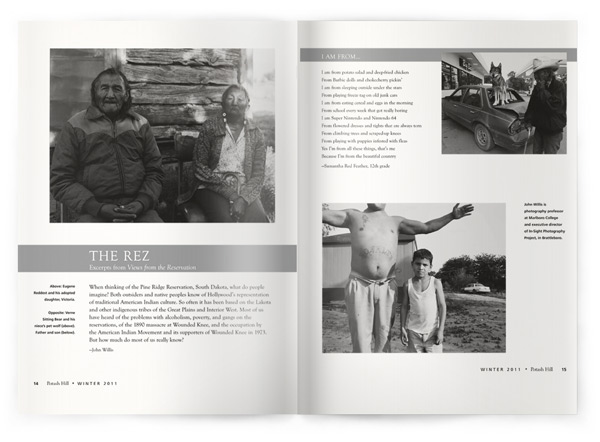
Excerpts from Views from the Reservation
When thinking of the Pine Ridge Reservation, South Dakota, what do people imagine? Both outsiders and native peoples know of Hollywood’s representation of traditional American Indian culture. So often it has been based on the Lakota and other indigenous tribes of the Great Plains and Interior West. Most of us have heard of the problems with alcoholism, poverty, and gangs on the reservations, of the 1890 massacre at Wounded Knee, and the occupation by the American Indian Movement and its supporters of Wounded Knee in 1973. But how much do most of us really know? —John Willis
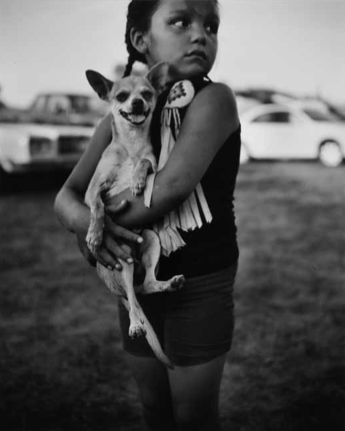
I am from…
I am from potato salad and deep-fried chicken
From Barbie dolls and chokecherry pickin’
I am from sleeping outside under the stars
From playing freeze tag on old junk cars
I am from eating cereal and eggs in the morning
From school every week that got really boring
I am Super Nintendo and Nintendo 64
From flowered dresses and tights that are always torn
From climbing trees and scraped-up knees
From playing with puppies infested with fleas
Yes I’m from all these things, that’s me
Because I’m from the beautiful country
—Samantha Red Feather, 12th grade
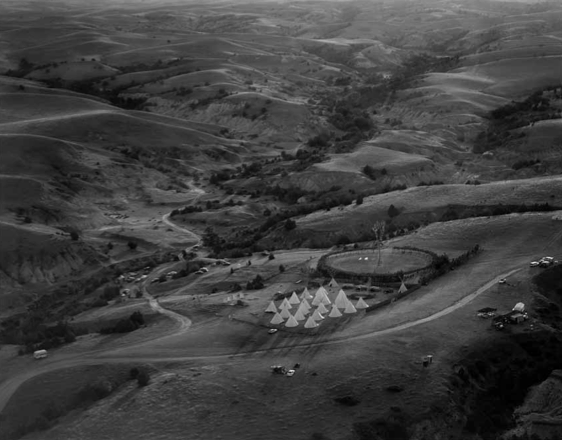
Be Thankful
You have to say a prayer of Thanksgiving.
You have to be thankful
Otherwise it’s like a house without windows.
It’s dark
In the morning when you wake up from a good
night’s sleep, you open
Your eyes and you see the light.
Say a prayer of thanksgiving before you get up.
Thank you. Thank you Tunkasila for another day.
—Victoria Chipps, elder
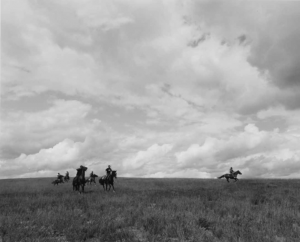
In the Struggle, We Stand
In the struggle we stand, shields and shawls
It’s in the struggle great duty calls
It’s a duty to Oyate, a duty to the people
Use your head Sitting Bull said
Find what’s lost, move us ahead
Cause there’s more to history
Than what meets the book
There’s a blizzard blowing hard
And it’s 100 degrees
In the struggle we stand kin to kin
Struggle to stand through strength from within
Look back to where and why, when and how
Hold on to what’s dear, c’anupa in our hearts
Families rent asunder, cultures ripped apart
In the struggle we stand, seven generations thence
Diplomas and degrees and learned and smart
We talk and we read and glean from past days
We find where we are and where we’ve been
In the struggle we stand
—Lavelle Warrior, 9th grade
Photos, poems and narrative excerpted from Views from the Reservation, by John Willis. Center for American Places: Chicago, 2010. John Willis is photography professor at Marlboro College and executive director of In-Sight Photography Project, in Brattleboro.
Gender Dialogues in Bolivia
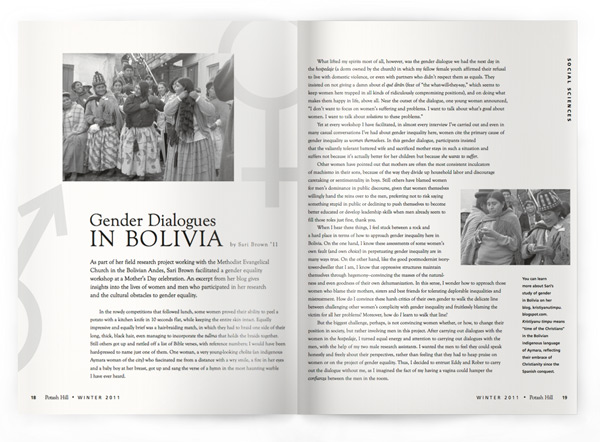
by Sari Brown ‘11
As part of her field research project working with the Methodist Evangelical Church in the Bolivian Andes, Sari Brown facilitated a gender equality workshop at a Mother’s Day celebration. An excerpt from her blog gives insights into the lives of women and men who participated in her research and the cultural obstacles to gender equality.
In the rowdy competitions that followed lunch, some women proved their ability to peel a potato with a kitchen knife in 10 seconds flat, while keeping the entire skin intact. Equally impressive and equally brief was a hair-braiding match, in which they had to braid one side of their long, thick, black hair, even managing to incorporate the tullma that holds the braids together. Still others got up and rattled off a list of Bible verses, with reference numbers; I would have been hard-pressed to name just one of them. One woman, a very young-looking cholita (an indigenous Aymara woman of the city) who fascinated me from a distance with a wry smile, a fire in her eyes and a baby boy at her breast, got up and sang the verse of a hymn in the most haunting warble I have ever heard.
What lifted my spirits most of all, however, was the gender dialogue we had the next day in the hospedaje (a dorm owned by the church) in which my fellow female youth affirmed their refusal to live with domestic violence, or even with partners who didn’t respect them as equals. They insisted on not giving a damn about el qué dirán (fear of “the what-will-they-say,” which seems to keep women here trapped in all kinds of ridiculously compromising positions), and on doing what makes them happy in life, above all. Near the outset of the dialogue, one young woman announced, “I don’t want to focus on women’s suffering and problems. I want to talk about what’s good about women. I want to talk about solutions to these problems.” Yet at every workshop I have facilitated, in almost every interview I’ve carried out and even in many casual conversations I’ve had about gender inequality here, women cite the primary cause of gender inequality as women themselves. In this gender dialogue, participants insisted that the valiantly tolerant battered wife and sacrificed mother stays in such a situation and suffers not because it’s actually better for her children but because she wants to suffer.
Other women have pointed out that mothers are often the most consistent inculcators of machismo in their sons, because of the way they divide up household labor and discourage caretaking or sentimentality in boys. Still others have blamed women for men’s dominance in public discourse, given that women themselves willingly hand the reins over to the men, preferring not to risk saying something stupid in public or declining to push themselves to become better educated or develop leadership skills when men already seem to fill those roles just fine, thank you.
When I hear these things, I feel stuck between a rock and a hard place in terms of how to approach gender inequality here in Bolivia. On the one hand, I know these assessments of some women’s own fault (and own choice) in perpetuating gender inequality are in many ways true. On the other hand, like the good postmodernist ivory-tower-dweller that I am, I know that oppressive structures maintain themselves through hegemony—convincing the masses of the naturalness and even goodness of their own dehumanization. In this sense, I wonder how to approach those women who blame their mothers, sisters and best friends for tolerating deplorable inequalities and mistreatment. How do I convince these harsh critics of their own gender to walk the delicate line between challenging other women’s complicity with gender inequality and fruitlessly blaming the victim for all her problems? Moreover, how do I learn to walk that line?
But the biggest challenge, perhaps, is not convincing women whether, or how, to change their position in society, but rather involving men in this project. After carrying out dialogues with the women in the hospedaje, I turned equal energy and attention to carrying out dialogues with the men, with the help of my two male research assistants. I wanted the men to feel they could speak honestly and freely about their perspectives, rather than feeling that they had to heap praise on women or on the project of gender equality. Thus, I decided to entrust Eddy and Rober to carry out the dialogue without me, as I imagined the fact of my having a vagina could hamper the confianza between the men in the room.
One morning, on a national holiday, we managed to wake some eight or so of the hospedaje boys. As might be expected from their reluctance to participate, the men weren’t quite as enthusiastic or thoughtful in their responses as I would have liked. Part of the problem, I realized, was my assistants’ lack of understanding and ability to clarify the theoretical concepts they presented. But in addition, a factor that we could not control was that all of the men maintained an uncritical denial of the existence of any significant problems with gender inequality hoy en día (in this day and age).When Eddy and Rober asked for examples of the differences between men and women according to their cultural context, most of the men failed to elaborate even on such “givens” as women’s place in the house and men’s place at work, or women’s sentimentality and men’s stoicism. Most of them simply said, “Really, hoy en día, there is no difference between men and women. Women have all the same rights and can do all the same things men do.” Given that I had just finished reading a laborious, 175-page sociological report on the gender breach in all aspects of Bolivian society, this response on the part of my hermanos made me want to bang my head against the wall. The report indicated, for example, that women politicians are customarily sexually harassed to intimidate them into stepping down, that men in the majority of couples have control over family planning, and that seven of every ten women have experienced violence in the home.
I realize that the problem is a structural one. Just as women who seem to choose to remain in a position of subordination can’t be personally blamed for this choice, men can’t be personally blamed for their uncritical consent to a system of inequality that is as natural to them as the thin highland air. Nonetheless, although it may be no man’s intention, I found that even basically decent men in this community engage in concrete actions and behaviors that serve to oppress women. This would need to be addressed if the radical egalitarian vision espoused by the Methodist Evangelical Church is to be realized, a vision that is particularly relevant to the marginalized indigenous communities that make up the Church’s majority.
Gender dialogues can help elaborate and clarify cultural ideals, and they can also help concientizar the participants (make them aware) and thus eventually change practices and entire realities. However, the most significant factor is how we, as men and women, actually relate to each other on a day-to-day basis, and how we might implement change into habits that seem as old as time. As Eddy always says, “Gender inequality comes from antes (before), from our ancestors, from the way it’s always been.” But stereotypes, social structures and cultural norms aren’t people. People are much more mercurial, quirky, adaptable and ultimately joyful in their daily lives.
Maybe gender theorists have much to say about how the woman in El Alto who won the potato-peeling contest is seriously, tragically limited to finding her worth only in menial domestic tasks. But that devilish grin on her face as she stripped that potato naked and let a perfect, continuous spiral of skin drop to the ground was enough to convince me that she genuinely does find joy in her everyday potato-peeling life. The differences between men’s and women’s opinions as voiced in a gender dialogue are only a tiny part of the story of how they relate to each other, love each other and infuriate each other “in this day and age.”
You can learn more about Sari’s study of gender in Bolivia on her blog, kristiyanutimpu.blogspot.com. Kristiyanu timpu means “time of the Christians” in the Bolivian indigenous language of Aymara, reflecting their embrace of Christianity since the Spanish conquest.
Dismantling oppression in Oregon
“Bringing injustices to light is contagious, buoyant and spreading,” said Choya Adkison-Stevens ’04, a community engagement coordinator at the YWCA of Greater Portland. After four years as a primary advocate at the Y’s domestic violence shelter, Choya’s new role allows her to branch out and start exciting new projects, including training communities on elder abuse, survivor-centered services and housing advocacy. “I am constantly striving to meet people right where they are, with the right mix of compassion, information, openness, humor, gravity—and sometimes succeeding. I know I’ve done well when I get a phone call from a woman I worked with four years ago (as happened last week) and she just wants to check in, catch me up on her kids’ lives, let me know she’s ok.”
Entomophagy: Guess who’s crawling to dinner
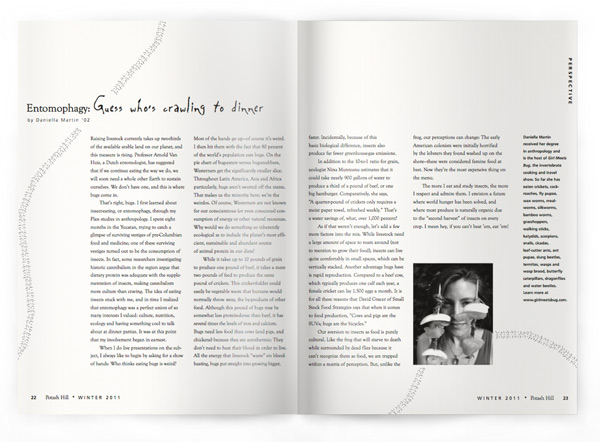
by Daniella Martin ’02
Raising livestock currently takes up two-thirds of the available arable land on our planet, and this measure is rising. Professor Arnold Van Huis, a Dutch entomologist, has suggested that if we continue eating the way we do, we will soon need a whole other Earth to sustain ourselves. We don’t have one, and this is where bugs come in.
That’s right, bugs. I first learned about insect-eating, or entomophagy (en•toe•móff•a•gee), through my Plan studies in anthropology. I spent eight months in the Yucatan, trying to catch a glimpse of surviving vestiges of pre-Columbian food and medicine; one of these surviving vestiges turned out to be the consumption of insects. In fact, some researchers investigating historic cannibalism in the region argue that dietary protein was adequate with the supplementation of insects, making cannibalism more culture than craving. The idea of eating insects stuck with me, and in time I realized that entomophagy was a perfect union of so many interests I valued: culture, nutrition, ecology and having something cool to talk about at dinner parties. It was at this point that my involvement began in earnest.
When I do live presentations on the subject, I always like to begin by asking for a show of hands: Who thinks eating bugs is weird? Most of the hands go up—of course it’s weird. I then hit them with the fact that 80 percent of the world’s population eats bugs. On the pie chart of bug-eaters versus bug-snubbers, Westerners get the significantly smaller slice. Throughout Latin America, Asia and Africa particularly, bugs aren’t swatted off the menu. That makes us the minority here; we’re the weirdos. Of course, Westerners are not known for our conscientious (or even conscious) consumption of energy or other natural resources. Why would we do something so inherently eco-logical as to include the planet’s most efficient, sustainable and abundant source of animal protein in our diets?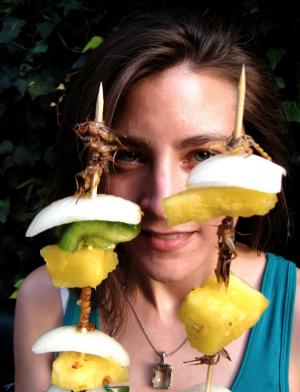 While it takes up to 10 pounds of grain to produce one pound of beef, it takes a mere two pounds of feed to produce the same pound of crickets. This cricket-fodder could easily be vegetable waste that humans would normally throw away, the by-products of other food. Although this pound of bugs may be somewhat less protein-dense than beef, it has several times the levels of iron and calcium. Bugs need less food than cows (and pigs, and chickens) because they are ectothermic: They don’t need to heat their blood in order to live. All the energy that livestock “waste” on blood-heating, bugs put straight into growing bigger, faster. Incidentally, because of this basic biological difference, insects also produce far fewer greenhouse-gas emissions.
While it takes up to 10 pounds of grain to produce one pound of beef, it takes a mere two pounds of feed to produce the same pound of crickets. This cricket-fodder could easily be vegetable waste that humans would normally throw away, the by-products of other food. Although this pound of bugs may be somewhat less protein-dense than beef, it has several times the levels of iron and calcium. Bugs need less food than cows (and pigs, and chickens) because they are ectothermic: They don’t need to heat their blood in order to live. All the energy that livestock “waste” on blood-heating, bugs put straight into growing bigger, faster. Incidentally, because of this basic biological difference, insects also produce far fewer greenhouse-gas emissions.
In addition to the 10-to-1 ratio for grain, ecologist Nina Munteanu estimates that it could take nearly 900 gallons of water to produce a third of a pound of beef, or one big hamburger. Comparatively, she says, “A quarter-pound of crickets only requires a moist paper towel, refreshed weekly.” That’s a water savings of, what, over 1,000 percent?
As if that weren’t enough, let’s add a few more factors into the mix. While livestock need a large amount of space to roam around (not to mention to grow their food), insects can live quite comfortably in small spaces, which can be vertically stacked. Another advantage bugs have is rapid reproduction. Compared to a beef cow, which typically produces one calf each year, a female cricket can lay 1,500 eggs a month. It is for all these reasons that David Gracer of Small Stock Food Strategies says that when it comes to food production, “Cows and pigs are the SUVs; bugs are the bicycles.”
Our aversion to insects as food is purely cultural. Like the frog that will starve to death while surrounded by dead flies because it can’t recognize them as food, we are trapped within a matrix of perception. But, unlike the frog, our perceptions can change: The early American colonists were initially horrified by the lobsters they found washed up on the shore—these were considered famine food at best. Now they’re the most expensive thing on the menu.
The more I eat and study insects, the more I respect and admire them. I envision a future where world hunger has been solved, and where most produce is naturally organic due to the “second harvest” of insects on every crop. I mean hey, if you can’t beat ’em, eat ’em!
Daniella Martin received her degree in anthropology and is the host of Girl Meets Bug, the invertebrate cooking and travel show. So far she has eaten crickets, cockroaches, fly pupae, wax worms, mealworms, silkworms, bamboo worms, grasshoppers, walking sticks, katydids, scorpions, snails, cicadas, leaf-cutter ants, ant pupae, dung beetles, termites, wasps and wasp brood, butterfly caterpillars, dragonflies and water beetles. Learn more at www.girlmeetsbug.com.
On & Off the Hill
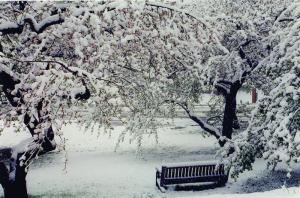 Newsy articles from Marlboro and around the world, including a fond farewell to history professor Tim Little, a report from students in China, a class in community-based performance and a new professor of ceramics, Martina Lantin.
Newsy articles from Marlboro and around the world, including a fond farewell to history professor Tim Little, a report from students in China, a class in community-based performance and a new professor of ceramics, Martina Lantin.
Tim Little takes a bit of Marlboro history with him
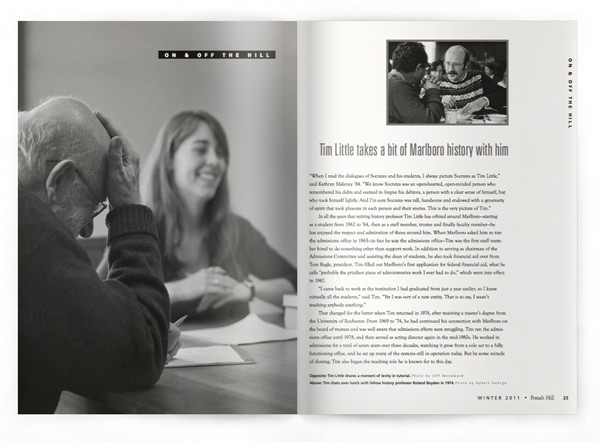
“When I read the dialogues of Socrates and his students, I always picture Socrates as Tim Little,” said Kathryn Maleney ’84. “We know Socrates was an open-hearted, open-minded person who remembered his debts and seemed to forgive his debtors, a person with a clear sense of himself, but who took himself lightly. And I’m sure Socrates was tall, handsome and endowed with a generosity of spirit that took pleasure in each person and their stories. This is the very picture of Tim.”
In all the years that retiring history professor Tim Little has orbited around Marlboro—starting as a student from 1962 to ’64, then as a staff member, trustee and finally faculty member—he has enjoyed the respect and admiration of those around him. When Marlboro asked him to run the admissions office in 1965—in fact he was the admissions office—Tim was the first staff member hired to do something other than support work. In addition to serving as chairman of the Admissions Committee and assisting the dean of students, he also took financial aid over from Tom Ragle, president. Tim filled out Marlboro’s first application for federal financial aid, what he calls “probably the grizzliest piece of administrative work I ever had to do,” which went into effect in 1967.
“I came back to work at the institution I had graduated from just a year earlier, so I knew virtually all the students,” said Tim. “Yet I was sort of a new entity. That is to say, I wasn’t teaching anybody anything.”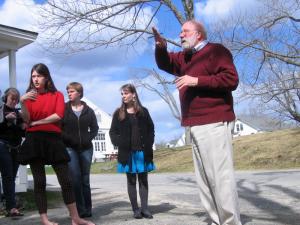 That changed for the better when Tim returned in 1974, after receiving a master’s degree from the University of Rochester. From 1969 to ’74, he had continued his connection with Marlboro on the board of trustees and was well aware that admissions efforts were struggling. Tim ran the admissions office until 1978, and then served as acting director again in the mid-1980s. He worked in admissions for a total of seven years over three decades, watching it grow from a solo act to a fully functioning office, and he set up many of the systems still in operation today. But by some miracle of cloning, Tim also began the teaching role he is known for to this day.
That changed for the better when Tim returned in 1974, after receiving a master’s degree from the University of Rochester. From 1969 to ’74, he had continued his connection with Marlboro on the board of trustees and was well aware that admissions efforts were struggling. Tim ran the admissions office until 1978, and then served as acting director again in the mid-1980s. He worked in admissions for a total of seven years over three decades, watching it grow from a solo act to a fully functioning office, and he set up many of the systems still in operation today. But by some miracle of cloning, Tim also began the teaching role he is known for to this day.
Tim relished the opportunity to teach with history professor Roland Boyden, his Plan sponsor and mentor in so many ways. Roland was the first faculty member ever hired and was also the first dean of the faculty. Roland’s daughter Rachel Boyden ’79 remembers Tim coming to their house in Cambridge to work on his Plan when her father was on sabbatical, in 1964. “Tim is a link to the early years of Marlboro,” she said. “It will certainly make the whole experience of history at the college different when he retires.”
“Tim offered the yang to Roland’s yin,” said Peter Mallary ’76, one of Tim’s first Plan students and father of Rebecca Mallary ’11, one of Tim’s final Plan students. “Where Roland was economical, Tim was expansive. While both were generous with their time and teaching, the first was an introvert and the second a decided extrovert. Tim has an openness—particularly with students—that is infectious. There is always a story or an observation of a curious, amusing and sometimes trenchant sort. He is a gifted raconteur.”
“Because it suited me to do it this way, and Roland did it this way, if a student came to me with an interest that was historical, I would be willing to work with that student if I could be persuaded that he or she would work hard too,” said Tim. “The fact that I knew as little about it as they did at the beginning couldn’t prevent us from getting somewhere. I’ve very seldom been let down. I’ve had some wonderful students over the years.” Jeff Bower ’92 credits Tim with helping him learn how to learn. “Tim is the very quintessence of Marlboro College,” he said. “Here is a man capable of sharing a great breadth and depth of knowledge within his field while at the same time allowing students to learn along their own path. He guided without boundaries, encouraged the articulation and development of ideas and presented cause and effect, while at the same time realizing that the linearity with which history is sometimes presented is never how history actually happens.”
Jeff Bower ’92 credits Tim with helping him learn how to learn. “Tim is the very quintessence of Marlboro College,” he said. “Here is a man capable of sharing a great breadth and depth of knowledge within his field while at the same time allowing students to learn along their own path. He guided without boundaries, encouraged the articulation and development of ideas and presented cause and effect, while at the same time realizing that the linearity with which history is sometimes presented is never how history actually happens.”
Although Tim began in European history, his interests were continually broadened by his students’ interests and by collaborations with other faculty members. He covered Asian history with some students, Native American history with others, and “gaily danced into” lots of Anglo-American history working alongside American studies professor Dick Judd. “As it became more and more evident that history was being written and discussed on a broader and broader scope, it wasn’t so unusual that I should go into world history,” said Tim. “Everybody was doing it, and Marlboro was building up to the World Studies Program. It made sense in a way that it really didn’t before.”
“Tim gave me a new perspective on how to ‘read’ history—an important tool for critical thinking,” said trustee Sara Coffey ’90. Sara was one of the first students in the World Studies Program, and, because she started midyear, had to take the first semester of the required World History and Cultures as a tutorial with Tim. “I still see him engaging with students with the same generosity that I experienced. He has not lost that mischievous sparkle either.”
The launching of the World Studies Program had a particular sparkly significance for Tim that he didn’t know at the time, as it brought in cultural history and Eurasian studies professor Dana Howell, whom he married a few years later. “Dana and I worked well together. We taught this huge class together for World Studies, which involved grading papers and spilling all sorts of things.”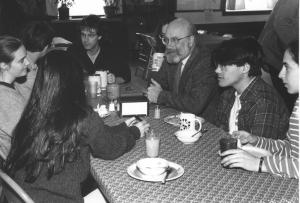 Over the years, Tim has always embodied the community spirit at Marlboro. He was a highly respected Town Meeting moderator and led a “breakfast club” chat in the dining hall every morning he was on campus. He was also a devoted emcee for the annual day-care bake sale, according to Gina DeAngelis ’94, who wrote the script for him one year.
Over the years, Tim has always embodied the community spirit at Marlboro. He was a highly respected Town Meeting moderator and led a “breakfast club” chat in the dining hall every morning he was on campus. He was also a devoted emcee for the annual day-care bake sale, according to Gina DeAngelis ’94, who wrote the script for him one year.
“He was far funnier off the cuff than anything I’d written,” said Gina. “He also ended up bidding on a cake I made, and the next day in the dining hall, he came up to me in front of a dozen people and sang my praises for five solid minutes: I was definitely, he said, no matter what other things I’d ever done, going to go to heaven, solely because of that cake. I will be forever grateful to him for his gentle guidance, his warm sense of humor and his unparalleled joie de vivre.”
Now with a little more time on his hands, Tim is looking forward to being with his three grandsons and reading the “piles and piles of things” he’s collected in case he found himself retired. He is also interested in getting certified to teach children to read, and understands that there is a demand for older men in that field. “Sometimes the students get cranky with their female teachers, and an old, grim-looking man like me will give some gravity to it.”
For many years Tim has been working on writing a history of Marlboro College, and it is hard to imagine a person better equipped in aptitude and experience to do so. “The problem is that every time I sit down to write a history I end up writing a memoir,” said Tim. “And when I say, oh hell, I’ll just write a memoir to get it out of the way, the history keeps intervening again.” We await both with great anticipation.
Language students find context in China
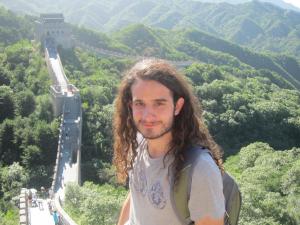 “I felt like an expatriate, like Hemingway or some other Lost Generation type in Paris,” said junior Casey Friedman, referring to his trip to China with four other Marlboro students last summer. “There I was with a small band of my countrymen, surrounded by a foreign world into which we didn’t quite fit. And it was magnificent.”
“I felt like an expatriate, like Hemingway or some other Lost Generation type in Paris,” said junior Casey Friedman, referring to his trip to China with four other Marlboro students last summer. “There I was with a small band of my countrymen, surrounded by a foreign world into which we didn’t quite fit. And it was magnificent.”
The students joined Chinese language professor Grant Li for six weeks at the International Cultural Exchange School at Changchun University, in Jilin Province, thanks to support from the Freeman Foundation Undergraduate Asian Studies Initiative. Every morning they had Chinese classes with other students at the school, most of them from Korea and Russia, and in the afternoon they enjoyed cultural activities ranging from kung fu and calligraphy to making dumplings.
“The experience was more about the culture than the language,” said Grant. “Language is a gradual thing, and the instruction was hard for them because the teachers never spoke English. But culturally, you can see the way of life right away. They lived there. They learned where to go, what people were doing.”
The students became adept at ordering food at restaurants, haggling with shop-owners, navigating around Changchun and crossing busy streets seemingly against all odds. “People there have a very different approach to obeying traffic laws,” said sophomore Chad Daniels. “Also, taking Chinese public transportation has totally redefined my understanding of ‘personal space’; entering and exiting buses and subways can sometimes literally mean climbing over 10 or so people.”
The program left room for the students to explore the city on their own and get to know some of the Russian and Korean students who shared their classroom, many of whom spoke English. Grant fondly remembers junior Nick Stefan challenging one of the many men who play Xiangqi, or “Chinese chess,” on the street to a game, and beating him. “I don’t usually play with the people on the street because it’s hard for me to beat them.” said Grant. 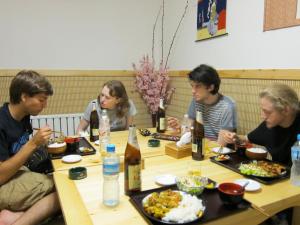 Each student took away valuable experiences that will be integrated into their course of study at Marlboro. For sophomore Megan Reed, experiencing the Chinese language on its own turf ties into her interest in language as a whole. “I’m studying theoretical linguistics, which looks past the basics of language and dives more directly into the foundation of all languages. So knowing more than one language can help to prove points in this field.”
Each student took away valuable experiences that will be integrated into their course of study at Marlboro. For sophomore Megan Reed, experiencing the Chinese language on its own turf ties into her interest in language as a whole. “I’m studying theoretical linguistics, which looks past the basics of language and dives more directly into the foundation of all languages. So knowing more than one language can help to prove points in this field.”
For junior Mike Ulen, who is interested in exploring Chinese folk crafts, especially woodworking, the trip helped put his Plan of Concentration into perspective. He said, “It enhanced my Chinese and made it easier to learn more about China via the vehicle of its own language, which is incredibly important.”
Students take performance off the hill
“I think having performances that celebrate, educate, question and inspire communities is critical to keeping those communities vibrant and alive,” said Jodi Clark ’95, assistant director of youth initiatives at Monadnock Family Services in Keene, New Hampshire. “All cultures I can think of have some means of performance that fulfills the need for these kinds of cultural reflections.” Jodi coordinates ActingOut, an issue-oriented teen theater program where three Marlboro students had internships this fall as part of a class called Community-Based Performance.
“Community-based performance challenges participants to immerse themselves in the communication of experience,” said Ken Schneck, dean of students, who taught the class. “This isn’t about boxing in the artist as a solitary genius, but is instead rooted in that which happens collectively: Individuals interact with a group of people with some shared identity, and this lived experience then informs the art, further developing the sense of community.”
This was amply demonstrated by Kevin and Erin Maile O’Keefe, founders of CircusYoga, who worked with the class on community performance exercises they call “kinesthetic play.” Their collaboration with the students culminated with an evening of lively dancing in the streets of Brattleboro during the town’s “gallery walk,” where they invited other community members to join in.
“We like to find activities that kind of level the playing field,” said Erin. “It doesn’t matter what language you came into the world with, it doesn’t matter what your culture is, because together we’re going to co-create culture through play.”
In addition to ActingOut, students interned at Mahalo Art Center, the Theater Adventure Program (TAP) at New England Youth Theater, and Sandglass Theater, directed by former visiting faculty member Eric Bass. 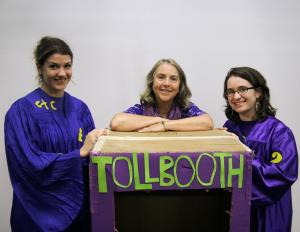 “We walked in and were thrown into the fire right away,” said sophomore Samantha Hohl, who interned at TAP, a theater program for children, youth and adults with disabilities directed by Laura Lawson Tucker ’77. “We were amazed at how Laura can incorporate herself into everything and maintain control on so many levels. It works really well for how crazy it is.”
“We walked in and were thrown into the fire right away,” said sophomore Samantha Hohl, who interned at TAP, a theater program for children, youth and adults with disabilities directed by Laura Lawson Tucker ’77. “We were amazed at how Laura can incorporate herself into everything and maintain control on so many levels. It works really well for how crazy it is.”
“I think these internships will help students broaden their worldview beyond their studies and beyond ‘being on the hill,’” said Laura. “My hope is that they will go out into the world understanding how critical it is that the arts are offered within a community, in order to give all a voice, as well as the power of theater to strengthen and frame a community and its members.”
“Ken’s class provides such a rare opportunity to take advantage of this arts-rich region and to truly see some of the places where the strength of our greater Brattleboro area comes from,” said Jodi. “Having hands-on knowledge, observing or participating in these various community organizations, and feeling firsthand the power of their art is one of the best sorts of learning experiences.”
New faculty member broadens ceramics program
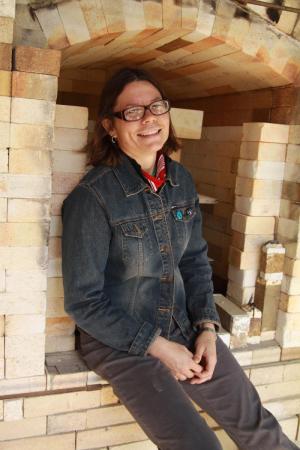 “I am on the cusp of changing my palette of glaze colors—I’m hunting for a good deep purple,” said Martina Lantin, Marlboro’s new ceramics professor. That’s not all that’s changing in the ceramics program, as Martina brings a refreshingly broad practice and perspective into the studio that fits in well with Marlboro’s visual arts program.
“I am on the cusp of changing my palette of glaze colors—I’m hunting for a good deep purple,” said Martina Lantin, Marlboro’s new ceramics professor. That’s not all that’s changing in the ceramics program, as Martina brings a refreshingly broad practice and perspective into the studio that fits in well with Marlboro’s visual arts program.
“In art there’s so much emphasis placed on the original idea, or the original work, that I think young people are often reluctant to look more broadly at what has come before,” said Martina. “I think it’s important to start training students to look at other work, and look at it critically: not just what this artist has done, but where their inspirations come from and whether their artist’s statement actually matches what they’ve achieved.” She knows that ceramics is about engaging one’s mind as well as one’s hands, and her classes incorporate research projects and critiques to establish each student’s own conceptual development and vocabulary.
“I see ceramics, and all art-making, as integral to a liberal arts curriculum,” said Martina. “Ceramics combines chemistry, physics and artistic expression, for example. It takes care and attention to craft, and the determination to develop skill is akin to learning the art of writing and critical thinking.”
Martina has an M.F.A. from Nova Scotia College of Art and Design University, but her knowledge of ceramics has been broadened by numerous international experiences, including an apprenticeship in England and graduate study in Denmark. She also worked as a production potter, and favorably compares the community environment at Marlboro to communal studios she has worked in. She likes that the individualized learning paradigm at Marlboro allows her to explore alongside her students.
As far as her own work, Martina draws inspiration from aspects of material culture and the story of how populations have moved around the globe through history. She has had shows across the United States and in Canada, and is represented in several galleries. In 2010 she received an artist fellowship from the Tennessee Arts Commission and was featured in the October issue of Ceramics Monthly.
“I am always striving to develop new forms in the studio, and have been fascinated with ‘flower bricks’ [vases that hold several separate stems] in the past year—they offer a unique connection to ceramic history as well as the dual potential of utilitarian and decorative functions.”
While the divide between functional and sculptural sometimes runs deep in the ceramics world, Martina is one of many modern ceramists who are challenging the centuries-old aesthetic that anything useful cannot also be beautiful. One of the things that attracted her to Marlboro was that the college was looking for a “vessel maker.” This implied a strong commitment to the craft tradition, or functional ceramics, which is uncommon in an art discipline dominated by sculptural ceramics.“I try to disengage from that professional debate of art versus craft,” said Martina. “In the same way that I see ceramics as just as academically rigorous as any other course here at Marlboro, I think ceramics is as aesthetically valid as any other form of visual art. It’s really exciting to know that functional ceramics is fostered and seen as being important here.”
Martina is enjoying working with the other visual arts faculty to integrate their curriculum and build on their mutual strengths, creating a diverse and dynamic program. “When I consider my colleagues Cathy Osman and Tim Segar and John Willis, I can imagine myself complementing their approach to teaching and individual aesthetics.”
To see more of Martina’s work, go to her website at www.mlceramics.com.
Events put the world on stage
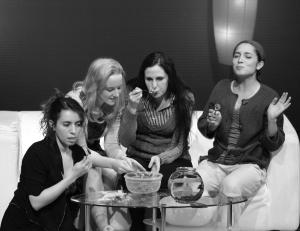 Whittemore Theater was buzzing this fall with a variety of dramatic events, both homegrown and from afar, comic and tragic. In September, for a second year, the Marlboro community welcomed Castle Theatre Company, the official theater company of University College, Durham, in the United Kingdom. The company, composed of talented students and graduates of Durham, rendered Shakespeare’s dark tragedy known as “the Scottish play.”
Whittemore Theater was buzzing this fall with a variety of dramatic events, both homegrown and from afar, comic and tragic. In September, for a second year, the Marlboro community welcomed Castle Theatre Company, the official theater company of University College, Durham, in the United Kingdom. The company, composed of talented students and graduates of Durham, rendered Shakespeare’s dark tragedy known as “the Scottish play.”
“Castle Theatre brought us an engaging, focused, streamlined rendition of Macbeth, featuring bold interpretive edges and lucid performances,” said Paul Nelsen, theater professor. “These British students have taken a real interest in Marlboro as well, and our hosting them gives us a chance for an invigorating exchange.”
Another highlight in September was a performance in the biennial Puppets in the Green Mountains Festival, presented by Sandglass Theater. This year’s participant was Colette Garrigan, from Normandy, France, with an imaginative shadow puppet performance of personal narrative, called Sleeping Beauty. “Puppets in the Green Mountains Festival offers students an opportunity to encounter international artists who present work outside familiar notions of conventional theater,” said Paul.
In October, film and video professor Jay Craven presented “Queen City Radio Hour,” a live performance of original comedy and music, recorded for future broadcast over Vermont Public Radio. This third edition of the variety show featured performances by senior Heather Reed, Amber Schaefer ’10, Gahlord Dewald ’98 and visiting music professor Charlie Schneeweis. Comic sketches included “Slender Pickins Rural Dating and Mating Service,” “The In-Laws Holiday Travel Bureau” and purportedly the only Vermont gubernatorial debate to include the word “giblet.”
Over the course of the semester, guest director Anna Bean worked with a crew and cast of Marlboro students in an exploration of Sarah Ruhl’s contemporary play The Clean House, presented at Whittemore in November.
“The Clean House is a comedy driven by issues of class and race,” said Anna, who received her doctorate in performance studies from New York University and edited A Sourcebook on African-American Performance. She chose Ruhl’s work partly because women playwrights are typically underrepresented in both professional theater and college programs. The Clean House also challenges cultural and language barriers. “Casting a play at a small college with a mandatory requirement that two main actors speak Portuguese and Spanish was risky, but I believe the ‘risk’ was worth the result: a play that lives in several cultural worlds at the same time.”
With experience teaching at Williams College and Wesleyan University, Anna was not disappointed by the caliber of cast and crew she found at Marlboro. “Working with them all has been a true joy because I did not have to set high standards—they already have and meet them in their lives as Marlboro students,” she said. “With so many stellar students dedicated to making intellectually stimulating theater, I hope the theater program will continue to be supported in bringing guest artists and teachers to campus.”
For more information about events on campus, theatrical and otherwise, go to www.marlboro.edu/news/events.See excerpts from the October 10 piano recital by Cynthia Raim, the first in this year’s Music for a Sunday Afternoon concert series honoring retired music professor Luis Batlle, at www.youtube.com/watch?v=op24I8bs7yc.
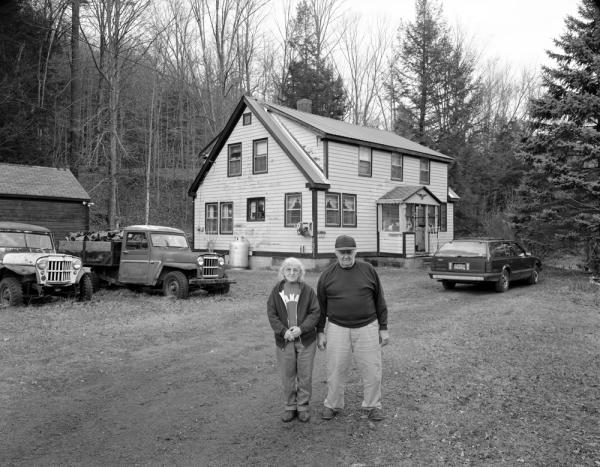 In October, an exhibit of photos by Forrest Holzapfel (son of David ’72 and Michelle ’73) and a talk by the artist highlighted the residents of Marlboro and the role of photographers in documenting local history. The traveling exhibit, called “A Deep Look at a Small Town,” was supported by the Vermont Folklife Center.
In October, an exhibit of photos by Forrest Holzapfel (son of David ’72 and Michelle ’73) and a talk by the artist highlighted the residents of Marlboro and the role of photographers in documenting local history. The traveling exhibit, called “A Deep Look at a Small Town,” was supported by the Vermont Folklife Center.
Worthy of Note
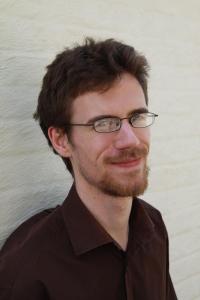 “Marlboro students are the keenest students I’ve ever known,” said classics fellow Will Guast, who joined Marlboro in September. Will received his B.A. in classics from Christ Church, University of Oxford, receiving honors and prizes for Latin language, verse composition and historical linguistics. In addition to his background in languages, he is interested in examining religion in the Roman world, particularly during the transition from paganism to Christianity. “What excites me most about Marlboro is freedom,” said Will. “The freedom to take complete control of a subject and design my own courses totally from scratch; the free-thinking and diversity of the student body; and the freedom of being in the middle of the green mountains, with miles of trails and countryside to explore.” He plans to pursue postgraduate study in classics back at Oxford on the papyrology of the Second Sophistic.
“Marlboro students are the keenest students I’ve ever known,” said classics fellow Will Guast, who joined Marlboro in September. Will received his B.A. in classics from Christ Church, University of Oxford, receiving honors and prizes for Latin language, verse composition and historical linguistics. In addition to his background in languages, he is interested in examining religion in the Roman world, particularly during the transition from paganism to Christianity. “What excites me most about Marlboro is freedom,” said Will. “The freedom to take complete control of a subject and design my own courses totally from scratch; the free-thinking and diversity of the student body; and the freedom of being in the middle of the green mountains, with miles of trails and countryside to explore.” He plans to pursue postgraduate study in classics back at Oxford on the papyrology of the Second Sophistic.
Did you know that lesbian, gay, bisexual and transgender (LGBT) students are two to three times more likely to use alcohol and other drugs than their straight counterparts? Neither did many college administrators before going to one of Ken Schneck’s talks at the regional conference of the National Association for Campus Activities. Ken was a featured speaker at the November conference, sharing the podium with other leaders in higher education administration. In addition to his talk, titled “Queers, Jeers and Beers,” Ken presented on creating programming for a new generation of students who expect administrators to know more than they usually do about LGBT students. “We spend so much time at these conferences focusing on LGBT 101, we lose sight of how some of the specific challenges faced by gay students directly result in increased risky behavior,” said Ken. 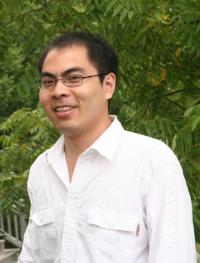 In August, Marlboro welcomed Yang “Louis” Liu, the new mathematics fellow. “The community here creates an excellent environment for teaching and learning,” said Louis, who received his bachelor’s degree in mathematics from Guangzhou University and his master’s from Sun Yat-sen University. He has been a teaching assistant at the University of Georgia, where he received his Ph.D. in mathematics in 2010, and a research assistant in both marine science and mathematics. Louis’ research focuses on random matrices and compressed sensing, but he is also interested in the mathematical modeling of aggregations of marine particles. “This is a great experience, teaching mathematics classes and advising students at Marlboro,” said Louis. “They are very self-motivated and have a breadth of knowledge across different disciplines.”
In August, Marlboro welcomed Yang “Louis” Liu, the new mathematics fellow. “The community here creates an excellent environment for teaching and learning,” said Louis, who received his bachelor’s degree in mathematics from Guangzhou University and his master’s from Sun Yat-sen University. He has been a teaching assistant at the University of Georgia, where he received his Ph.D. in mathematics in 2010, and a research assistant in both marine science and mathematics. Louis’ research focuses on random matrices and compressed sensing, but he is also interested in the mathematical modeling of aggregations of marine particles. “This is a great experience, teaching mathematics classes and advising students at Marlboro,” said Louis. “They are very self-motivated and have a breadth of knowledge across different disciplines.”
“I have long identified with the culture of ‘free inquiry’ associated with Marlboro College,” said Eileen Harney, who joined the college this fall as the Mellon Foundation–funded humanities fellow. “It is rewarding to be at an institution that promotes individuality and self-discovery among the student body while respecting and showing appreciation for the college’s own history.” Eileen received her B.A. in English from Boston College and her master’s and doctorate in medieval studies from the University of Toronto. Her interests in medieval literature and women’s and gender studies have guided her research on four female saints’ literary traditions across the medieval period. She has diverse experiences as a teacher, but finds the teaching expectations at Marlboro both challenging and exciting. “I am struck by how clearly invested Marlboro students are in their education,” Eileen said.
At the October meeting of the Consortium for Innovative Environments in Learning (CIEL), Sirkka Kaufman, assistant dean of academic affairs, participated in a panel discussion on applying results of the Wabash National Study of Liberal Arts Education. The Wabash study gathered evidence from dozens of institutions across the country to strengthen liberal arts education, but only a handful of those schools used innovative learning and assessment methods similar to Marlboro’s. Sirkka’s panel, which included presenters from New College of Florida, Alverno College, Prescott College and Hampshire College, described a data-sharing project using Wabash results to grapple with cross-institutional comparisons. “Our project stands to help put each institution’s learning outcomes into context and deepen our understanding of alternative practices and their likely effects,” said Sirkka. The panel conducted additional analyses prior to presenting again at the January meeting of the Association of American Colleges and Universities.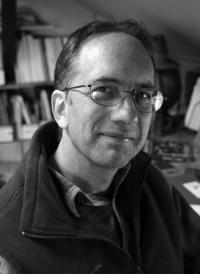 “Hornbills are uniquely tropical, uniquely visible even from a bike, and, well, just plain unique,” said Potash Hill editor Philip Johansson. His essay “Hornbills o’Plenty: Birdwatching by Bike in West Africa” was selected for inclusion in Wildbranch: An Anthology of Nature, Environmental and Place-based Writing, published by University of Utah press in 2010. The anthology is a collection of work from faculty and students of the Wildbranch Writing Workshop, held each summer for more than 20 years at Sterling College (current address of Will Wootton ’72, president), in Craftsbury, Vermont, and co-sponsored by Orion magazine. It also includes work of Alison Townsend ’75. “I take some credit for the success of the workshop because I attended the first one, I think, in 1988,” said Philip. “Hornbills o’Plenty” was based on his bicycle travels through Cote d’Ivoire, Ghana, Mali and Burkina Faso in 1993.
“Hornbills are uniquely tropical, uniquely visible even from a bike, and, well, just plain unique,” said Potash Hill editor Philip Johansson. His essay “Hornbills o’Plenty: Birdwatching by Bike in West Africa” was selected for inclusion in Wildbranch: An Anthology of Nature, Environmental and Place-based Writing, published by University of Utah press in 2010. The anthology is a collection of work from faculty and students of the Wildbranch Writing Workshop, held each summer for more than 20 years at Sterling College (current address of Will Wootton ’72, president), in Craftsbury, Vermont, and co-sponsored by Orion magazine. It also includes work of Alison Townsend ’75. “I take some credit for the success of the workshop because I attended the first one, I think, in 1988,” said Philip. “Hornbills o’Plenty” was based on his bicycle travels through Cote d’Ivoire, Ghana, Mali and Burkina Faso in 1993.
January marks the publication of retired literature professor Jaysinh Birjepatil’s new book, The Good Muslim of Jackson Heights, by Penguin (India). The fictional story of an aristocratic Muslim family that flees sectarian violence in their native central India, only to find reverberations in multiethnic urban America, Birje’s book traverses the tension between secular and religious. “Even though the central character in my book is a Muslim, I am not,” he said. “I was born in an upper caste Hindu family, but I lost all religion when I was packed off to a British boarding school in early childhood.” Birje says publication was delayed to assure that the book would not offend religious sensibilities, Muslim or Hindu. Meanwhile, Bennett & Spencer are publishing an American edition that will be available by the end of 2011.
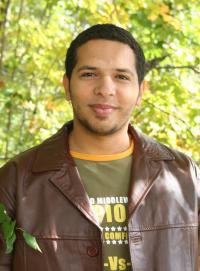 Ayman Yacoub joined Marlboro this fall as a Fulbright-supported foreign language fellow, the fifth to continue the Arabic language program. “Being a fellow at Marlboro offers me the experience of a new culture and a different educational system,” said Ayman, who comes from Egypt. “Compared to other students I have had, Marlboro students enjoy their lives and find balance between their academic needs and their special interests.” He received his bachelor’s in English from Al-Azhar University in Cairo, and also studied English at American University in Cairo and educational translation at Al-Azhar University. Ayman has been a volunteer teacher at an orphanage and is interested in history and poetry. After his fellowship he hopes to pursue research in the area of translation studies.
Ayman Yacoub joined Marlboro this fall as a Fulbright-supported foreign language fellow, the fifth to continue the Arabic language program. “Being a fellow at Marlboro offers me the experience of a new culture and a different educational system,” said Ayman, who comes from Egypt. “Compared to other students I have had, Marlboro students enjoy their lives and find balance between their academic needs and their special interests.” He received his bachelor’s in English from Al-Azhar University in Cairo, and also studied English at American University in Cairo and educational translation at Al-Azhar University. Ayman has been a volunteer teacher at an orphanage and is interested in history and poetry. After his fellowship he hopes to pursue research in the area of translation studies.
“Do our noses really contain a system for detecting and sorting molecular vibrations? A recent test of this theory suggests that they just might,” said chemistry and biochemistry professor Todd Smith in a September broadcast of the Northeast Public Radio show Academic Minute. “This is shaping up to be an interesting period in the history of smell.” Todd, who discussed recent breakthroughs in our understanding of smell, was one of four Marlboro professors who contributed to the show this year. In July, politics professor Meg Mott discussed the origins of Monopoly and its impact on American economic attitudes, and in August, philosophy professor William Edelglass explored moral responsibility and climate change. Literature professor Heather Clark took a fresh look at American poet Sylvia Plath in October. 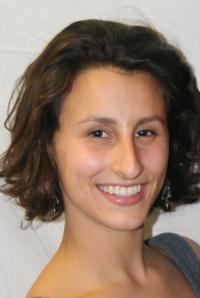 “I wanted a program that would not only enhance my ecological training, but would also integrate cultural learning into the equation,” said senior Jessica Stern. “Understanding the human dynamics, and how they clash and mesh with the environment, is just as important as understanding the basic ecological functions of a place.” Jess found all that and more on the School for International Training’s program on Tropical Forest Ecology, Biodiversity and Marine Ecosystems, which she calls “sort of a crash course through the different biological systems, regions and cultures in Panama.” In addition to developing her fluency in Spanish, Jess conducted research on the local uses of medicinal plants and their natural history, which will tie into her Plan of Concentration on ecology and ethnobotany.
“I wanted a program that would not only enhance my ecological training, but would also integrate cultural learning into the equation,” said senior Jessica Stern. “Understanding the human dynamics, and how they clash and mesh with the environment, is just as important as understanding the basic ecological functions of a place.” Jess found all that and more on the School for International Training’s program on Tropical Forest Ecology, Biodiversity and Marine Ecosystems, which she calls “sort of a crash course through the different biological systems, regions and cultures in Panama.” In addition to developing her fluency in Spanish, Jess conducted research on the local uses of medicinal plants and their natural history, which will tie into her Plan of Concentration on ecology and ethnobotany.
With an ardent interest in postwar peace-building and conflict resolution, social science fellow Gearoid Millar is not afraid of controversial issues, as exemplified by his class this fall called Anti-Disciplinarity: Responding to Social Complexity. “Together the students and I investigated the varying disciplinary approaches to youth violence and international development,” said Gearoid (pronounced gar-ROAD). “I certainly would not have gotten to teach this class at another university, and it is extremely exciting to see students struggle with the idea of social complexity and analysis.” He received his bachelor’s degree in political science and sociology from Florida Atlantic University and his master’s in international peace and conflict resolution from American University. Gearoid is currently a Ph.D. candidate in social science at the Maxwell School of Citizenship and Public Affairs at Syracuse University.
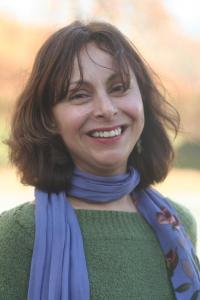 Last summer, Spanish professor Rosario de Swanson spent three weeks in the Dominican Republic, leading a language and literature program for promising students. It was her third year there, teaching a curriculum she designed as part of MACILE (Matemáticas, Ciencias y Lenguaje), a program dedicated to improving the quality of education for K–12 students in less advantaged communities. “I love seeing the eighth-graders discover things about their heritage they did not know, or hear their town mentioned in a historical source, or see their island in a map of the Americas,” said Rosario. “The look of wonder in their eyes is priceless.” Her travels to the Dominican Republic followed a college-funded research trip to Equatorial Guinea, the only African country where Spanish is the official language. In Equatorial Guinea, Rosario researched a paper on the nationally celebrated writer Juan Tomás Ávila Laurel.
Last summer, Spanish professor Rosario de Swanson spent three weeks in the Dominican Republic, leading a language and literature program for promising students. It was her third year there, teaching a curriculum she designed as part of MACILE (Matemáticas, Ciencias y Lenguaje), a program dedicated to improving the quality of education for K–12 students in less advantaged communities. “I love seeing the eighth-graders discover things about their heritage they did not know, or hear their town mentioned in a historical source, or see their island in a map of the Americas,” said Rosario. “The look of wonder in their eyes is priceless.” Her travels to the Dominican Republic followed a college-funded research trip to Equatorial Guinea, the only African country where Spanish is the official language. In Equatorial Guinea, Rosario researched a paper on the nationally celebrated writer Juan Tomás Ávila Laurel.
For more information on these items, go to the following websites:
Ken Schneckwww.naca.org/NSTspeakers.aspx
CIELwww.cielearn.org
Wildbranchwww.uofupress.com
Academic Minutewww.wamc.org/academic-minute.html
Rosario de Swansonwww.marlboro.edu/news/focus/rosario_dominican
Or for those of you who can’t get enough news of Potash Hill, check out Marlboro’s very own Facebook page at www.facebook.com/marlborocollege, our YouTube channel at www.youtube.com/user/MarlboroCollege#pand the Potash Phil blog at www.marlboro.edu/communities/alumni/blog.
Alumni News
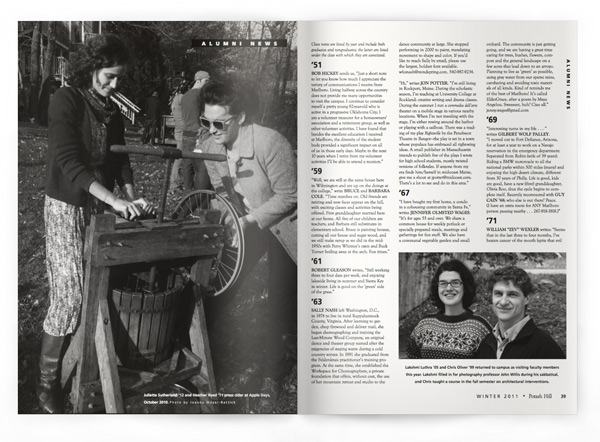
Class notes are listed by year and include both graduates and nongraduates; the latter are listed under the class with which they are associated.
’51
BOB HICKEY sends us, “Just a short note to let you know how much I appreciate the variety of communications I receive from Marlboro. Living halfway across the country does not provide me many opportunities to visit the campus. I continue to consider myself a pretty young 82-year-old who is active in a progressive Oklahoma City; I am a volunteer treasurer for a homeowners’ association and a retirement group, as well as other volunteer activities. I have found that besides the excellent education I received at Marlboro, the diversity of the student body provided a significant impact on all of us in those early days. Maybe in the next 10 years when I retire from my volunteer activities I’ll be able to attend a reunion.”
’59
“Well, we are still at the same house here in Wilmington and are up on the doings at the college,” write BRUCE and BARBARA COLE. “Time marches on. Old friends are retiring and new faces appear on the hill, with exciting classes and activities being offered. First granddaughter married here at our home. All five of our children are teachers, and Barbara still substitutes in elementary school. Bruce is painting houses, cutting all our house and sugar wood, and we still make syrup as we did in the mid-1950s with Perry Whitney’s oxen and Buck Turner boiling away at the arch. Fun times.”
’61
ROBERT GLEASON writes, “Still working three to four days per week, and enjoying lakeside living in summer and Siesta Key in winter. Life is good on the ‘green’ side of the grass.”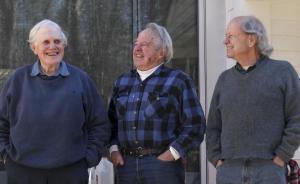 ’63
’63
SALLY NASH left Washington, D.C., in 1974 to live in rural Rappahannock County, Virginia. After learning to garden, chop firewood and deliver mail, she began choreographing and training the Last-Minute Wood Company, an original dance and theater group named after the exigencies of staying warm during a cold country winter. In 1991 she graduated from the Feldenkrais practitioner’s training program. At the same time, she established the Workspace for Choreographers, a private foundation that offers, without cost, the use of her mountain retreat and studio to the dance community at large. She stopped performing in 2000 to paint, translating movement to shape and color. If you’d like to reach Sally by email, please use the largest, boldest font available. wfcsnash@mindspring.com. 540-987-9234.
“Hi,” writes JON POTTER. “I’m still living in Rockport, Maine. During the scholastic season, I’m teaching at University College at Rockland: creative writing and drama classes. During the summer I run a commedia dell’arte theater on a mobile stage in various nearby locations. When I’m not traveling with the stage, I’m either rowing around the harbor or playing with a sailboat. There was a reading of my play Rightsville by the Penobscot Theatre in Bangor—the play is set in a town whose populace has embraced all right-wing ideas. A small publisher in Massachusetts intends to publish five of the plays I wrote for high school students, mostly twisted versions of folk-tales. If anyone from my era finds him/herself in mid-coast Maine, give me a shout at jpotter@midcoast.com. There’s a lot to see and do in this area.”
’67
“I have bought my first home, a condo in a cohousing community in Santa Fe,” writes JENNIFER OLMSTED WAGES. “It’s for ages 55 and over. We share a common house for weekly potluck or specially prepared meals, meetings and gatherings for fun stuff. We also have
a communal vegetable garden and small orchard. The community is just getting going, and we are having a great time caring for trees, bushes, flowers, compost and the general landscape on a few acres that lead down to an arroyo. Planning to live as ‘green’ as possible, using gray water from our sparse rains, car-sharing and avoiding toxic materials of all kinds. Kind of reminds me of the best of Marlboro! It’s called ElderGrace, after a poem by Maya Angelou. Sweeeeet, huh? Ciao all.” jenny.wages@gmail.com
’69
“Interesting turns in my life . . . ” writes GILBERT WOLF PALLEY. “I moved out to Fort Defiance, Arizona, for at least a year to work on a Navajo reservation in the emergency department. Separated from Robin (wife of 39 years). Riding a BMW motorcycle to all the national parks within 500 miles (many) and enjoying the high desert climate, different from 30 years of Philly. Life is good, kids are good, have a new (first) granddaughter, Olivia Roo, thus the cycle begins to complete itself. Recently reconnected with GUY CAIN ’68; who else is out there? Peace. (I have an extra room for ANY Marlboro person passing nearby . . . 267-918-1818.)”
’71
WILLIAM “ZEV” WEXLER writes: “Seems that in the last three to four months, I’ve beaten cancer of the mouth (spite that evil eye) and have lost 50 pounds in the process. Only really painful part of the therapy was the ‘walletectomy.’ While I continued to practice law throughout, I am just now starting to return to performing as a blues/pop/jazz singing pianist (and sometime stand-up comic). Having lost so many pounds, am thinking of writing The Cancer Cure for Diabetes. Been in contact with many alumni all over the country (Facebook is, if not overdone, a wonderful tool) and in the beginning stages of planning a Mini-Mexican Marlboro Migration. Continue to miss the Hill, as I’m sure most of us do. Good luck on your retirement, Luis (as if teachers and musicians can ever really retire). Best to all.”
’72
GRETCHEN HOLBROOK GERZINA writes, “ANTHONY (GERZINA) and I have just returned from a wonderful year in Oxford, where I was awarded the George Eastman Visiting Professorship by Oxford and the Rhodes Trust. I was given a big house for the year, and an honorary master’s degree, and in return gave a handful of lectures in Oxford and London. While there we spent time with EDIE WENTWORTH QUILTER and PAT KAUFMAN FS74. GAIL MANYAN HENRY came for several days and for a celebratory dinner at the Ashmolean Museum. We returned home on the Queen Mary 2, and spent several days in Brooklyn with our older son, Simon, his wife, Carrie, and our grandson, Miles. I’ve now resumed chairing the English department at Dartmouth, but I expect to spend more time at Marlboro now
that I’m a trustee of the college.”
’73
MICHELLE HOLZAPFEL shares that both she and DAVID HOLZAPFEL ’72 had work included in the exhibit “State of Craft” at the Bennington Museum this past summer and fall. The exhibition featured works by 86 Vermont craftspeople, drawing from the studio craft movement, c. 1960–2010. Her work was also featured in “A Revolution in Wood” at the Renwick Gallery in Washington, D.C., and several other museums beginning in 2012. She participated in a roundtable discussion in September with Renwick curator Nicholas Bell, collector Fleur Bresler and other artists. Michelle writes, “At home, we’re actively working on more links between the college and town communities with several initiatives, like a potluck reception following the opening of the exhibit at the Drury Gallery of our son Forrest Holzapfel’s photographic study called A Deep Look at a Small Town: Marlboro, Vermont. In his classroom at the Marlboro Elementary School, David is collaborating with philosophy professor William Edelglass and retiring biology professor Bob Engel (and their students), exploring topics of environmental philosophy.” She adds, “We’re contented four-time grandparents, with a new granddaughter born to our son Simon and his wife, Amy.”
’77
“On September 13 I started a new job as executive director at Garth Newel Music Center in Warm Springs, Virginia,” writes former student and Marlboro neighbor RICHARD RILEY. “This is a rare opportunity for both me and my artist wife, Susan. For me, the position offers an almost perfect fit with my experience and program interests, at a scale that is very exciting. For Susan, the facilities available to her (the job comes with a house and studio space) provide a good working environment, and the rural location offers endless material for a landscape painter.” He adds, “As excited as we are about what lies ahead, the prospect of moving farther away from family in New England and leaving our friends in Marlboro was difficult, to say the least.”
’79
At the Vermont History Expo in June, Dan Toomey manned a booth for Marlboro College that included the Early Voices video of pioneer interviews. “Dick and Suvia Judd’s caregiver happened to come around the corner when Dick was on the screen, and shouted, ‘There’s Dick Judd,’” said Dan. “The picture display drew a lot of attention on Saturday as well, with lots of people asking what the different buildings on the early campus were used for, what
the campus looks like today, etc.”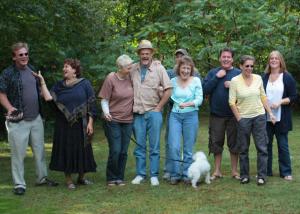 ’82
’82
HOLLY MANLEY is thrilled to announce that she is now working with the Fine Arts Work Center, in Provincetown, Massachusetts, a leading long-term residency program for emerging artists and writers. Holly will be working on a number of projects at the Work Center, and is happily settling into Provincetown. MARK MANLEY ’80 is holding down the Manley outpost in Washington Heights, New York. He continues to pursue his photography career and is currently working on a book project tentatively titled The Acupuncturist’s Table and a long-term project on jazz musicians in New York City. Holly adds that she “attended a festive Marlboro gathering at the home of LUCY LOOMIS ’80 in Barnstable, Massachusetts, in September. HARRY HUSSEY ’81, TONY SAVOIE FS81, ERIC BREMENKAMP FS83, LORI KIRSTEIN ’80 (visiting from the left coast) and IAN LEAHY ’81 (now living in Provincetown, too!) were in attendance, and a fine time was had by all. Much recounting of the old days, as well as rounds of the game, ‘what have you been up to the last 30 years?’”
DANIEL PICKER reports, “I have been awarded The Dudley Review poetry prize for my poem, ‘River Goddess.’ My poems have appeared in several editions of The Dudley Review, and I am a member of Harvard’s Dudley House.”
“I’m still a professor at Slippery Rock University,” writes DAVID SKEELE, “teaching acting, directing plays and heading up the playwriting program. This past summer I went off to the Edinburgh Fringe Festival to premiere a production of my latest play.”
’83
Doing his duty as a class agent, TED RANDOLPH sends us a nice long note. “Latest breaking news is that I had a great visit recently with longtime friend ALAN HOLT ’82, who is moving to Austin, Texas, where he will pursue his career in city planning and be closer to his parents. He reminded me of how he and Diane and I went swimming in a beautiful rock pool above Bash Bish Falls, just out of sight of the park ranger. Alan and I found that pool again, but chose an easier-to-approach one this time—still challenging for the marrow-chilling temperature of the water. We felt like schoolboys again, thank goodness. I frequently see REGINA TOUHEY SERKIN ’81, who lives here in Richmond, Massachusetts, and whose kids have gone to the same elementary and high schools as mine. Regina performs the annual organizational miracle of producing the K–8 talent show at our local elementary school. At church I often see 9-year-old Trudy Fadding, a bright and creative girl who every day looks more and more like her mom, MONICA SCHULTZ FADDING ’85. Monica, who passed away four years ago, moved to this area in 1993. She was a wonderful friend and neighbor, easy to drop in on unannounced for tea. We shared many small adventures—from pumpkin carving to sledding down a variety of the county’s hills—and miss her very much.
“I have been living in the Berkshires of Massachusetts since 1988, was married in Stockbridge in 1990, am still married and have three children: Nora is a sophomore up the street at Williams College, loves tango, Shakespeare and rock climbing; Sophie is a junior at Monument Mountain Regional High School, is an avid soccer player, ace student and has a flair for cooking; my baby, Tom, is now a freshman at the high school and is a Big Man On Campus, having recently surpassed my 6'5". He plays basketball and electric bass, and has a flair for eating. My beloved and ever-capable wife, Diane, is a partner in her private pediatric practice and still loves the part of her job that has to do with patient care. We live in a beautiful house that I largely built (am still building) using timbers from the property.
“I was glad to see a note from TIM PRATT ’82 in the last Potash Hill, but haven’t sent him an email yet (sorry, Tim), and I had a wonderful letter from BARBARA STERCHAK TRUE FS82 way back in 2003. Barbara, I am really sorry that I haven’t written back—yet—but I did buy and read your ‘Induction to Narrative Medicine’ in 2007 when I was at Marlboro for a big reunion thingy. I can be emailed at tedfr@rnetworx.com.”
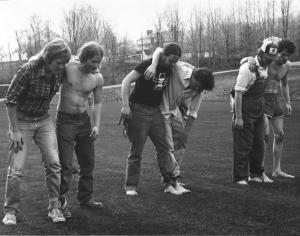 ’84
’84
“Papa Lou (Batlle) is retiring (Potash Hill, Summer 2010). Feels like the end of days,” writes DEB McCUTCHEN. “I remember a lovely conversation in the lunchroom between Luis and Geri on which was the best form of communication, writing or music. Who won? Life has gone all prosaic now, if not Prozac: fulltime lecturer in the UMass College of Natural Sciences, provost’s designee to the Writing Program Committee and in the middle of a new book (postapocalyptic gender bender sci-fi). It all sounds good enough, but I was the kid who couldn’t get through a grammar class (Geri sent me home to read the book on my own). And Papa Lou used to hunt us down in the dorms to see if we’d listened to our Schubert. And now my wee girls are growing up. Do I also send them blithely to the arts of doom? Music, or words? Otherwise, things are much of a muchness. Lovely husband, rattletrap home, a 4'5" 7-year-old who dyed her red hair purple and a 5'4" 11-year-old who dyed her brown hair red. One plays violin, the other euphonium,
and they both love stories. Would love to hear from the usual suspects.”
’85
JOHN VON WODTKE writes, “JIM DICKEY ’88 and his wife, Helen, brought my family on a memorable five-day raft tour of Idaho’s lower Salmon River. They are both raft guides and really know how to live it up on the river. With my oldest child, Maya, leaving for Middlebury College, it was a great send-off.”
’89
Former student GEORGE CASEY tells us, “Several years ago I became a published author, though as yet I haven’t made any money from it. My novellas are called The Luck of the Unicorn and Discovery One. You can view them on the Publish America website.”
’90
MARK ROESSLER writes, “Here’s how my wife, HAYLEY WOOD ’91, and I are doing: We are in our 12th year living in Northampton, Massachusetts. Despite the article in a recent Potash Hill describing 2008 as the year newspapers died (Winter 2010), that was the year my career in newspapers began: I became managing editor at the Valley Advocate after three years as their webmaster. It’s been a dream come true to have the opportunity to get my writing and images regularly published, but best of all is being a part of an inspiring and successful group
of journalists and lifelong newspaper fanatics. Unlike the gloom and doom many newspapers face, I’m happy to say the Advocate is thriving. Hayley was recently made senior program officer at the Massachusetts Foundation for the Humanities, and in her spare time she’s been active as an artist and local political organizer. She worked on set designs, puppets and poster art for Double Edge Theater’s summer spectacular, The Fire Bird. Our 5-year-old son, Otis, has just started kindergarten and is an avid naturalist and budding paleontologist.”
’91
“I became a New York State licensed psychoanalyst in July,” C. J. CHURCHILL writes. “I now have a private practice on 5th Avenue in Manhattan, around the corner from Union Square, in addition to being associate professor of sociology at St. Thomas Aquinas College.”
Bobbi Hahn ’91: Preparing tomorrow’s leaders
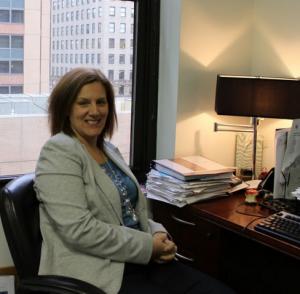 In 2006, Bobbi Hahn was accepted into the National Urban Fellows program as a fellow in pursuit of her master’s in public administration. After completing her “mentorship” with the United Way of New York City, Bobbi remained engaged with the National Urban Fellows as a consultant. In 2008, NUF offered her the position of director of operations.
In 2006, Bobbi Hahn was accepted into the National Urban Fellows program as a fellow in pursuit of her master’s in public administration. After completing her “mentorship” with the United Way of New York City, Bobbi remained engaged with the National Urban Fellows as a consultant. In 2008, NUF offered her the position of director of operations.
“National Urban Fellows offers 40 to 50 fellowships a year to women and people of color who have demonstrated a passion for equity and social justice in their careers and civic life,” said Bobbi. As director of operations, she is intricately involved with almost every aspect of the organization, from overseeing financial operations to new program development to human resource management. “To be a leadership development organization means modeling the leadership principles that we are advancing in others—being reflective, being responsible and building other leaders around us.”
Prior to her current position, Bobbi taught English in Japan, operated a café and worked with individuals with developmental disabilities. “This seemingly eclectic career laid the functional foundation for all that I do now, but I have also found a career that suits my personality—one that seeks out new adventures and is simply not happy without a daily challenge or hurdle to overcome.”
’92
LAURA FRANK writes, “I worked on the lighting design for the Vancouver 2010 Winter Games opening ceremony, which was honored with a Creative Arts Emmy Award this year. Fingers crossed I get the games in Rio. My husband, Dan Damkoehler, and I have been living in Brattleboro for the last five years now, and I’m grateful to get to see KRISTIN ANDERSON ’95’s daughter, Lila, growing up.”
ALEX GARDNER and his husband, Rosario Gennaro, and daughter, Matilde, welcomed Giuseppe—Beppe for short—to their family in May 2010.
’93
“Back in May our family took a California road trip,” writes LAURA HINERFELD, “and stopped in at the Huntington Library to catch up with JESSICA LEFKOWICZ O’PRAY. It was great to see her for the first time since graduation. In July, we welcomed our second son, Guthrie Martin Geist, into the menagerie. Big brother Amos, now 3 years old, the dogs, cat and goats are all taking it as well as can be expected.”
’95
“I’ve recently discovered Facebook,” writes PIPPA AREND. “Wow. Now I can overshare on an entirely new scale. Besides that, I am still finding wonderful depth and satisfaction with p:ear, the homeless youth organization that I run with two other women in Portland, Oregon. We just celebrated our eighth annual fundraiser, p:earblossoms, and raised $150,000—50 percent over last year.”
“My brother, PETER BLAIR ’01, just earned his master’s from Marlboro in May 2010,” writes W. ELIZABETH BLAIR. “I’m so proud of him. Who would have thought that when he and I drove through New England visiting colleges for myself he would be a Marlboro grad two times over!”
JODI CLARK and JENNY KARSTAD ’97 write that they are “ . . . continuing to love living and working in southern Vermont!”
CORIN CUMMINGS writes, “My wife, 2-year-old son and I recently moved to Montreal. Before that, I lived in Toronto for 10 years, but I have no idea how that happened or what I did while I was there. Drop us a line if you’re going to be visiting La Belle Province. I finished a novel last year based on my experiences in Siberia as a World Studies student. I’m not having great luck getting it published, however, and any advice or contacts would be appreciated. If you’d like to have a look at the manuscript, write me at corin@opaque.net.”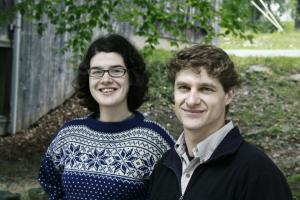 ’96
’96
“I’m on my first scripted show—Eastbound and Down—as night assistant editor,” writes ERIN PETERS. “It will be on HBO this fall, stars Danny McBride and is directed
by David Gordon Green.”
JON ROUSSEAU is “Not sure if I’ve had a class note in the mag since I moved to New Zealand in 2006. I am married to Celeste and have a son, Liam Conor Lafavilla Rousseau, born in February 2008. I have been working for Massey University-Wellington in student recruitment and advising for a little over four years. Hoping to return to the U.S. early in the new year.”
’97
“Though I had not expected to put down roots in the northeast, I am thriving in Boston,” writes HEATHER HUBBARD. “One and all are invited to visit if you are passing through. This summer I bought a condo in a diverse urban neighborhood called Jamaica Plain. I love that I regularly hear other languages spoken, see people commuting by bicycle and exchange
pleasantries with neighbors and people I pass on the street. I feel at home here,
and life is full of possibilities.”
“Hello from downtown Jersey City,” writes WENDY LEVY. “I like it here. It has a good downtown, and it’s a quick subway ride to New York City. Those of you who remember me from the cheese counter at the Brattleboro Food Co-Op won’t be surprised to learn I’m still a
cheesemonger. I’m trying to open my own cheese shop, and I need investors. The business plan is done. Email me at cheesesnobwendy@gmail.com for more information. A special ‘hello’ to JOHN BELL ’92.”
’98
SARAH ADELMAN writes, “My husband, Robb, and I welcomed our beautiful son, Forrest, into the world on May 10, 2010. Forrest is great teacher, and I am relearning how to be a student. We are still living in Montpelier, Vermont. Feel free to visit us if you’re up here protesting or registering your car.”
DAVID WILLIAMSON graduated with an M.S. from the University of Massachusetts at Amherst this past May.
Rachel Findel-Pyles ’98: Improving lives with behavior analysis
When Rachel Findel-Pyles got her doctorate in psychology from University of Nevada at Reno in 2005, her research applied principles of learning to individuals diagnosed with autism spectrum disorders. As the department chair for applied behavior analysis (ABA) at the Chicago School, Los Angeles, Rachel’s work now involves applying the same principles to a broader range of cases and training others in ABA.
“Initially my passion was driven by the progress I observed working directly with clients,” said Rachel, pictured here with her husband, Dave, and stepson, Sean Pyles, a Marlboro sophomore. “But now as a professor and business owner, I feel extremely fortunate to have the opportunity to teach, advise and mentor other individuals who improve lives each and every day.”
Rachel is also president of EXCITE—which rolls off the tongue a little better than “engineering excellence combined with innovation through education”—a consulting firm applying assessments to organizational behavior management. “It amazes me to see that all organizations, whether corporate or private, academic or business, profit or not-for-profit, struggle with the same issues related to communication, efficiency and effective practice,” Rachel said. She attributes much of her personal and professional success to “the self-management, discipline and day-to-day survival skills that I developed during my Plan of Concentration.”
’99
JUNIPER (MOTT-WHITE) KATZ writes, “My husband, Zack Katz, and I live in the Four Corners region. I’m the executive director of the Montezuma Land Conservancy in Cortez, Colorado. As much as I love Vermont, I must say we’ve settled into the sunny climate of the southwest with glee. No children at the moment, but a very spoiled cat named Pica graces our lives with her presence. We are in the process of buying a post-and-beam strawbale home on a few acres with water rights for gardens and trees. As chance has it, another Marlboro-ite just happens to live in little old Cortez too: SARAH HARPER BURKE ’98 and I have connected after more than 10 years in different parts of the country. It’s been great fun to get to know her and her husband.”
“ALEX ROGALSKI ’02 and I are getting used to being Bawlmers (i.e., we live in Baltimore),” writes TRICIA THEIS ROGALSKI, “but after almost three years I still feel like a New Englander. Alex continues to love his work as a mathematician, and I enjoy staying home with the kiddos. Georgia is almost 4, and Rainer turned 2 on Halloween. I keep busy as the co-president of a group that serves people who have Downs Syndrome and their families throughout the Chesapeake region. I am also actively involved with a coalition working for systemic change in the Maryland County Boards of Education to increase inclusive practices in public schools. When I am not taking part in that kind of grassroots activism, I still love writing, reading, taking pictures and volunteering at the Unitarian Universalist church. One thing I have learned since living in Baltimore is you gotta b’lieve, hon.”
’02
“Seth and I are thrilled to announce that we have welcomed our first child,” writes SHANA HALL DUNCAN. “Edith Josephine (we call her Edie) was born to panoramic views of San Francisco on March 31, 2010, weighing 8 pounds and measuring 20 inches. The first months of parenthood have been truly wonderful.”
JACQUELYN PILLSBURY writes that she is “doing well and coming to love the American South. Had my fourth baby in the spring.”
’03
JOSLYN HOMBERG writes, “My partner, Tim Haineswood, and I are happy to announce the birth of our daughter, Isadora Homberg Haineswood. She is a bright-eyed, smiley girl!”
Ulla Välk ’03: Picturing young travelers
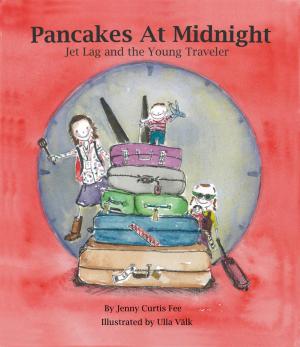 Now living in Amsterdam, artist Ulla Välk took time off from her work as a gallery curatorial assistant to illustrate Pancakes at Midnight: Jet Lag and the Young Traveler, a children’s book by her friend Jenny Curtis Fee. “According to Jenny, she sort of always envisioned my drawings when she wrote the book,” said Ulla, who used to draw pictures for Jenny’s niece and nephews.
Now living in Amsterdam, artist Ulla Välk took time off from her work as a gallery curatorial assistant to illustrate Pancakes at Midnight: Jet Lag and the Young Traveler, a children’s book by her friend Jenny Curtis Fee. “According to Jenny, she sort of always envisioned my drawings when she wrote the book,” said Ulla, who used to draw pictures for Jenny’s niece and nephews.
While her Plan at Marlboro was in printmaking and sculpture, as a junior Ulla illustrated a children’s book by writing professor Laura Stevenson (see Potash Hill, Summer-Fall 2002). “Having done that gave me great insight,” said Ulla. “I knew this time around what it would entail to take someone else’s text and try to enhance it with illustrations.”
Ulla lacked firsthand experience traveling with children, the subject of Pancakes, but she has travelled a lot herself and enjoys hanging out with kids. “My favorite part about illustrating this book was actually coming up with the characters, settings and situations,” she said. “I thought a lot about the picture books I loved as a kid and tried to remember what I loved in those images. I also drew a lot from my own memories of my niece, my godchildren and the kids I looked after at the Marlboro daycare.”
’05
LIZ CRAIN “is taking another year in Duvall, Washington, with the Wilderness Awareness School. I am apprenticing with the Anake Outdoor School, where my fellow classmate ASHLEY BIES is a student in the adult nine-month intensive program. It’s great to have a fellow Marlboro-ite to reminisce with about college days. At this moment I am in a planning meeting in Portland, Oregon, with Trackers International, another wilderness education program in the Pacific Northwest. Outdoor education and community development are what drive me in my passion to connect people with nature. If you are in the area and want to run around in the woods with me, I’d love to see ya.”
’06
“I made the move to the dirty South,” writes MATT LYNCH, “after a relaxing summer in Santa Fe, New Mexico, where I kicked it with old friends LIZ EMMER FS09, FIONA SULLIVAN ’08 and the inimitable JOSHUA SHIPPEE ’04. Currently I’m cutting my teeth in the Islamic Studies doctoral track at the University of North Carolina-Chapel Hill (I’m no more or less religious than I ever was, for those of you keeping score at home). Being a teaching assistant is a
new experience, as is wearing shorts in late October. I miss Marlboro, miss Andy and Ryan the most. Hope y’all are well.”
’07
MAGGIE JONES just completed her first freelance editing job in Portland, Oregon, where she is interning at Edible Portland Magazine, promoting fine tangible and intangible media with Lasercave Art Collective and stockpiling big sweaters. “Any Marlboro grads who live in Portland and need a sweater should get in touch.”
“Just completed my paperwork to transfer from the master’s to the Ph.D. program in urban studies at Portland State University,” writes TESSA WALKER. “Had some fun opportunities for field research in bike/pedestrian transportation projects over the summer. Loving being home in Oregon, but still miss Marlboro.”
’08
SETH BOWMAN is working with his agent to snag multiple movie and TV auditions in Honolulu, Hawaii, “while painting, dancing and running the fourth-biggest Hollister clothing store in the world.”
’09
Carlus (Max) Henderson is still getting his bearings at the University of Michigan graduate program in creative writing, which he reports is slightly different from Marlboro. “I got my copy of Potash Hill and of course read it cover to cover,” he says. “My heart broke when I read about the passing of Sandy Vonderhorst. She was always pleasant to me in service and in conversation, bringing a smile to my face when we passed each other sometimes in the morning on my way to class.”
’10
AMANDA DeBISSCHOP is “waking up at three in the morning to make donuts, nannying in the afternoons, writing in every spare moment and harboring high hopes for the near future.”
Letters

Plastics Can Be Good
I am the father of Anne Stein ’86, and wish to comment on the article “The Cosmopolitics of Garbage,” appearing in the Summer 2010 issue of Potash Hill. I am a retired professor of chemistry from the University of Massachusetts, Amherst, and one of the founders of its polymer program. I have been interested in the problem of plastic pollution for about 20 years and was the coordinator for the production of a documentary video “Troubled Waters,” which deals with the problem of marine pollution. I have also written an article called “Plastics Can BeGood for the Environment,” in which I contend that there are good and bad aspects of plastics and there is need to use them properly to avoid problems like the Great Pacific Garbage Patch.
Plastic bags can cause harm if they are disposed of improperly. Yet there are certainly advantages to them in that they are waterproof, lighter and have better carrying capacity than their paper replacement. While many believe that paper is less polluting, manufacturing paper bags requires more energy and water and leads to the release of toxic liquids. However, recycling plastic bags has not proved worthwhile since the value of the resulting products is not sufficient to cover the cost of collecting, cleaning and processing. Two solutions are suggested: (1) Do not give away free plastic bags at markets, but charge for them. (2) Use higher quality and thicker plastic bags that serve better for reuse. If procedures for proper use and disposal of plastics are encouraged or required, their environmental benefits outweigh their problems.
—Dick Stein, Goessmann
Professor of Chemistry, Emeritus
University of Massachusetts, Amherst
Datum Erratum
I have been meaning to write you in praise of the recent issue of Potash Hill. As usual I read the issue from cover to cover. It is rich in information. In particular the piece on Luis Batlle is well deserved—what a prince of a fellow—and the piece on the classics fellowship is splendid.... Oh, a minor point. Someone years ago got it into his head that I came in 1959, and that date has always since followed my name in Marlboro publications. I came in 1958, I think on August 1.
—Tom Ragle, former president
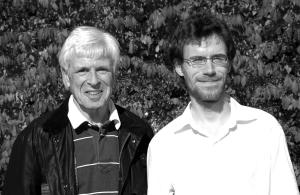 Classic Example
Classic Example
Visiting Marlboro again 42 years after teaching classics to young undergraduates (Potash Hill, Summer 2010) was a wonderfully nostalgic experience: the beautiful fall foliage, the opportunity to close the circle by meeting this year’s classics fellow; and how coincidental to come upon a soccer match against the School for International Training, with whom I too tussled as player-coach all those years ago. What an inspirational setting for higher learning.
—David Dry, classics fellow ’67–’68, shown here with Will Guast, current classics fellow.
Apple Days
We had several responses to the photo on page 58 in the Summer 2010 issue of Potash Hill. The identities of some of those pictured (above) are debatable, but the penchant for funky automobiles is unanimous.
Kit Barry is the one throwing the apple (you will have to ask him specifically at what); Jeff Eaton is looking on; Kendall Gifford is walking through. I do not know the name of the girl, but she was a student. The red Saab behind Kit’s throwing arm was Bob Hawthorne’s. Bob had the only “new” Saab at that time, as I remember, and it happened to be red. While there were cars on campus that needed parts, there were no parts cars, per se. Bud Gay had a Volvo, but I am not sure his is the one pictured.
—William Guy Cain ’68
The fellow throwing something is Kit Barry, and behind him with his arm raised against the sun is Jeff Eaton. I recognize the sitting woman but can’t remember her name. This would be around 1968. I think the 544 Volvo behind Kit’s hand might be mine, as I had a black one at the time, with a big white star decal on the trunk.
—Maggie Marx ’70
Thrower is Kit Barry. Behind him is Jeff “Chip” Eaton. Female’s first name I believe is Lucy (whose last name escapes me). Don’t know/remember guy in dark shirt. A bit of trivia re folks on page 46 of Winter 2010 photo: Carla Nordstrom’s father was a professor at Brooklyn College, where, before dropping out (to play music and ski-bum), I had him for introductory economics in 1964. When I came to Marlboro in ’68, Carla had already graduated, and I didn’t find out the connection until years later.
—William “Zev” Wexler ’71
That photo was probably from 1966 or maybe ’67. That might be Kit Barry doing the throwing. He had a small dirt bike that he used to noisily wind around that meadow on the left just before Moss Hollow Road dipped steeply downhill. Periodically he broke his leg doing this or other adventurous-type activities. If it is Kit, the woman is Lucy something or other, who was cheery and high-spirited and used to hang out with him. The dark-pants guy with the bulging right bicep might be Brooks Garis, because he is thinking hard and walking fast, which is what Brooks did. But wait, it looks like a cigarette pack in his shirt pocket and I don’t think Brooks smoked, so this is a low-probability guess. The only non-barefoot student, the one with the frayed cuffs—oh, he is in fact sockless, so that’s kind of in the spirit—might be Paddy Smith, who had a fabulous Morris Minor convertible that he traded in for an almost equally fabulous VW camper van. The multiple Saabs are there because that’s what ran in the snow. They were so popular that another former student, Dale Smith, was able to support himself for a while running a combination Saab engine shop and Zen bookstore in a second-floor location down in Brattleboro. They were deep and mysterious automobiles."
—Shelly Klapper ’69
People in photo are, from let to right, Kit Barry, Jeff Eaton, Lucy Jordan (sitting on rock) and Bud Symmes. Swedish cars in the photo are probably the sum total of Swedish cars on campus at that time. There were lots of other kinds of cars on campus, Corvairs, Mercedes, all mostly in various stages of age—all good as long as you could make it to Gibbsey’s or Bratt roundtrip in one piece. There was usually someone who could help to fix whatever was broken, or just turn the car upside down for a while to see if that cured the problem. Probably all the motorcycles were in the best shape of any transport options.
—Tina DuBosque ’70
The guy throwing the football (it was early fall) is named Kit. I don’t remember the name of the guy shielding his eyes. He was a friend of Eben Chesbrough’s. The girl sitting on the rock was named “Lucy.” I don’t know who the barefoot guy with the pack of smokes in his pocket was. He seems to be passing through. . . . I was from Berkshire County, Massachusetts, then and also remember the photographer, Clemens Kalischer, who was from Stockbridge.
—Paul García ’69
Parting Shot
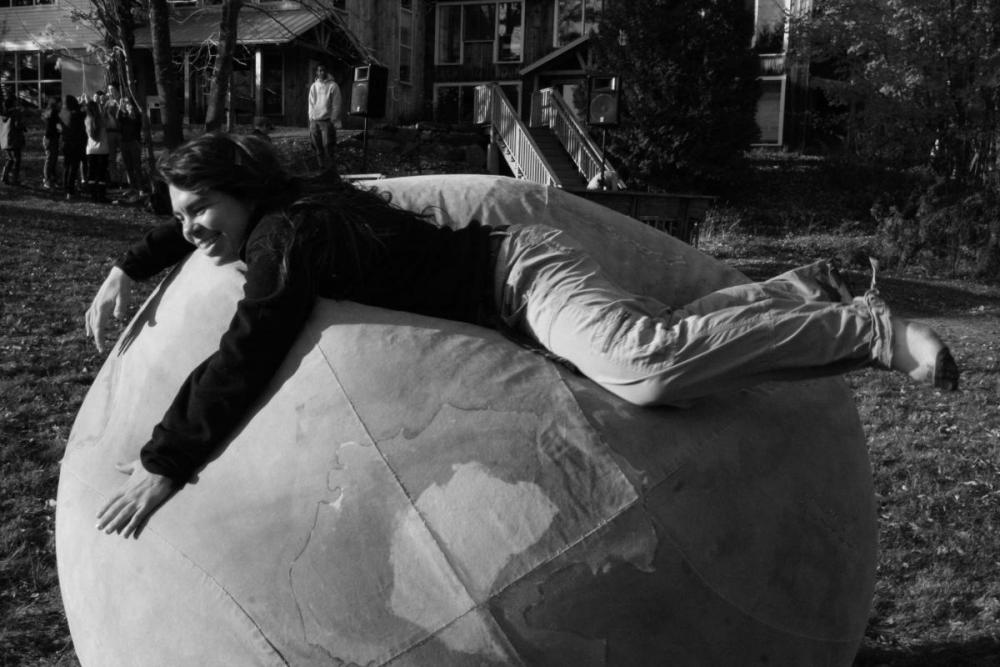
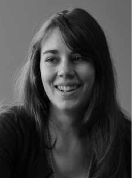 Anyone who thinks pastoral poetry is all rosy landscapes and butterflies should read their Virgil. Amanda Whiting '11 found a window into the confused and sometimes bloody legacy of land reform in republican Rome, beginning with Tiberius and Gaius Gracchus in the first century B.C. "Their attempts at land redistribution not only sparked a huge shift in the way the political system dealt with land, but were also symptomatic of the pressures that caused Rome's development from a republic into an empire," said Amanda. Her Plan is a combination of literature and history, including translations of pastoral poetry from ancient Greek and Latin. "The herdsmen of Virgil's Eclogues, many decades after the Gracchi had been killed, were still suffering from the effects of the failed program of agrarian reform."
Anyone who thinks pastoral poetry is all rosy landscapes and butterflies should read their Virgil. Amanda Whiting '11 found a window into the confused and sometimes bloody legacy of land reform in republican Rome, beginning with Tiberius and Gaius Gracchus in the first century B.C. "Their attempts at land redistribution not only sparked a huge shift in the way the political system dealt with land, but were also symptomatic of the pressures that caused Rome's development from a republic into an empire," said Amanda. Her Plan is a combination of literature and history, including translations of pastoral poetry from ancient Greek and Latin. "The herdsmen of Virgil's Eclogues, many decades after the Gracchi had been killed, were still suffering from the effects of the failed program of agrarian reform." If you can imagine wave functions in an n-dimensional space, you may also be ready for a field of mathematics called group theory, the Plan subject of Devin Wilmott ’11. “The ideas behind group theory are fairly unlike any other discipline I have seen, and lead to surprising and unintuitive but elegant results,” said Devin. Group theory requires a leap of imagination to leave behind most of the mathematical rules, or axioms, we know and love (such as x + y = y + x); then collections of objects, or “groups,” are found to interact with each other in new and significant ways. “Groups derive their power from their lack of constraints,” said Devin. “They can represent a number of things that make less sense in other contexts.” Group theory has many applications, including algebraic topology, cryptography, musical set theory, physics and chemistry.
If you can imagine wave functions in an n-dimensional space, you may also be ready for a field of mathematics called group theory, the Plan subject of Devin Wilmott ’11. “The ideas behind group theory are fairly unlike any other discipline I have seen, and lead to surprising and unintuitive but elegant results,” said Devin. Group theory requires a leap of imagination to leave behind most of the mathematical rules, or axioms, we know and love (such as x + y = y + x); then collections of objects, or “groups,” are found to interact with each other in new and significant ways. “Groups derive their power from their lack of constraints,” said Devin. “They can represent a number of things that make less sense in other contexts.” Group theory has many applications, including algebraic topology, cryptography, musical set theory, physics and chemistry.